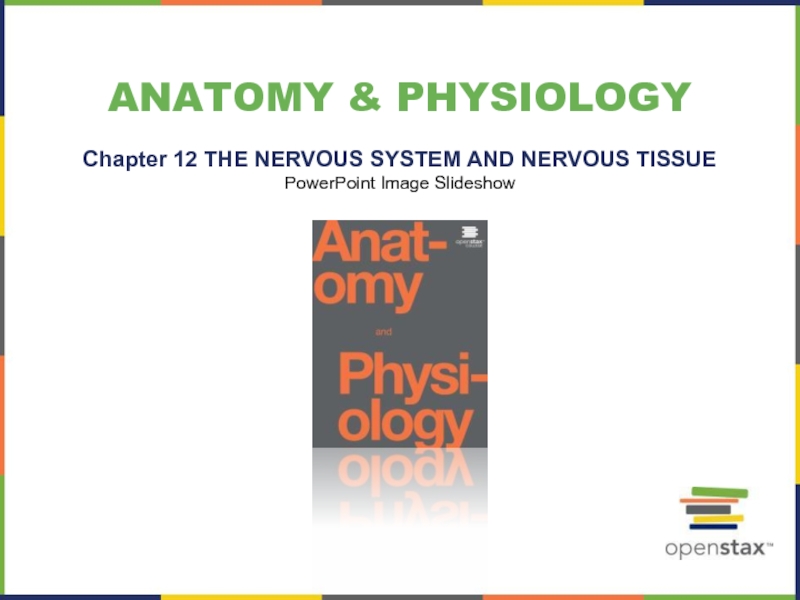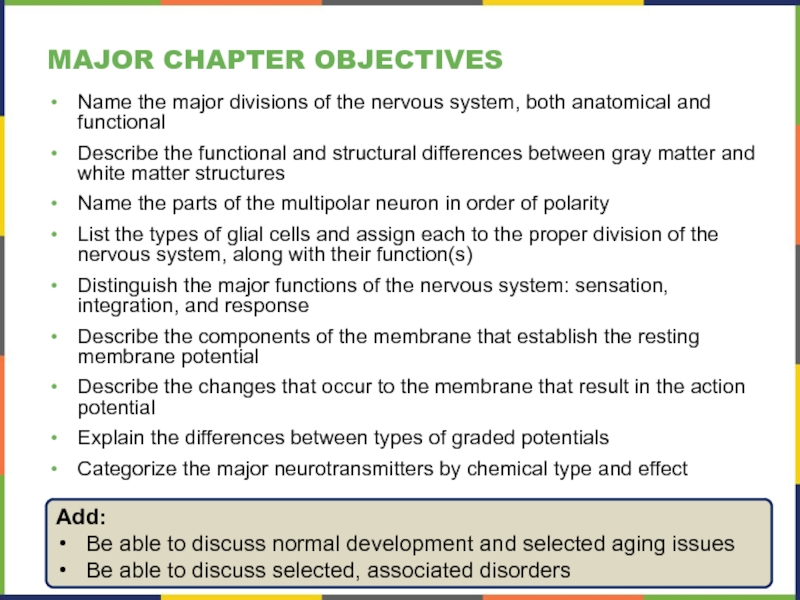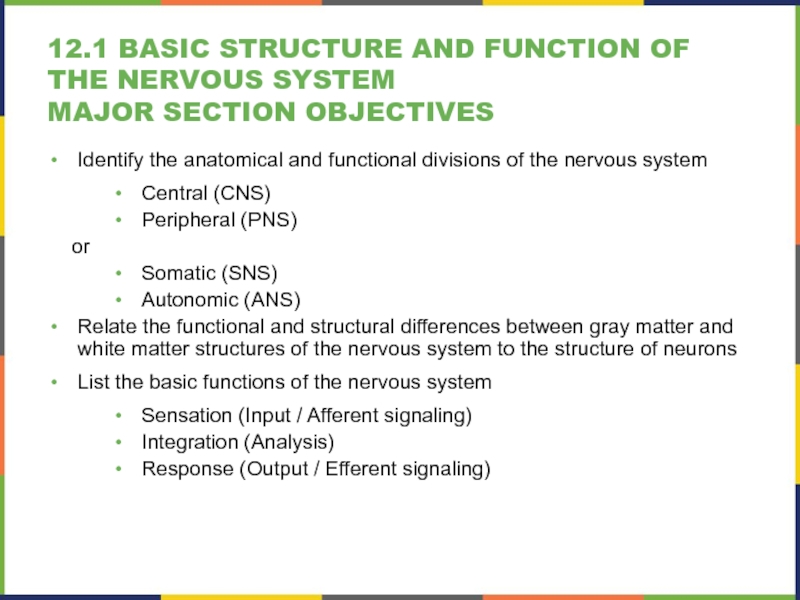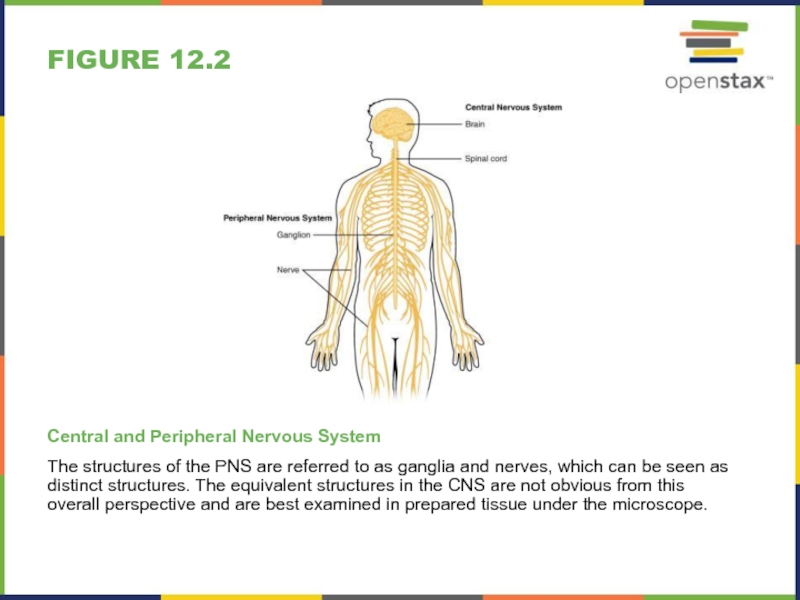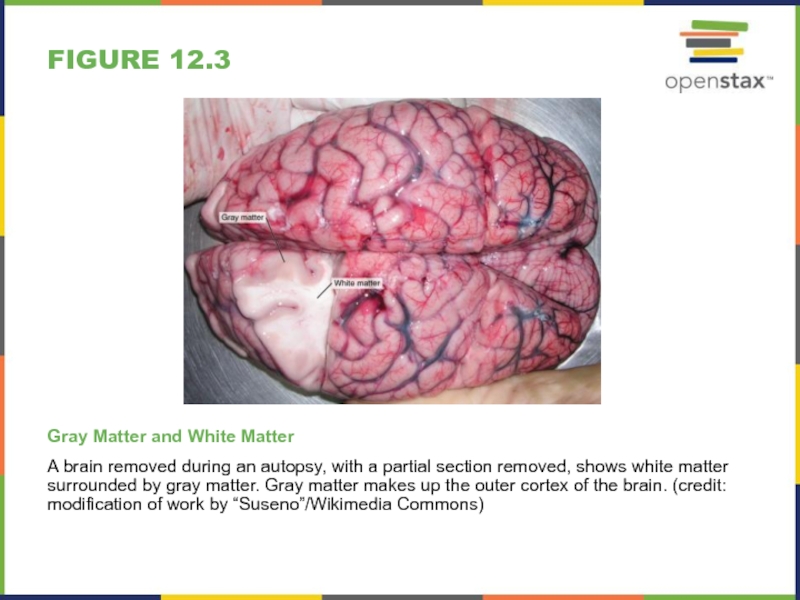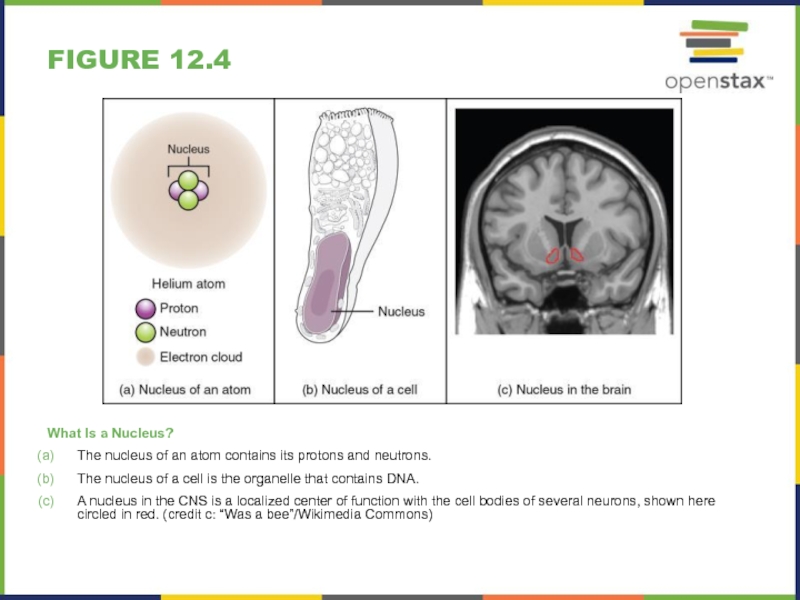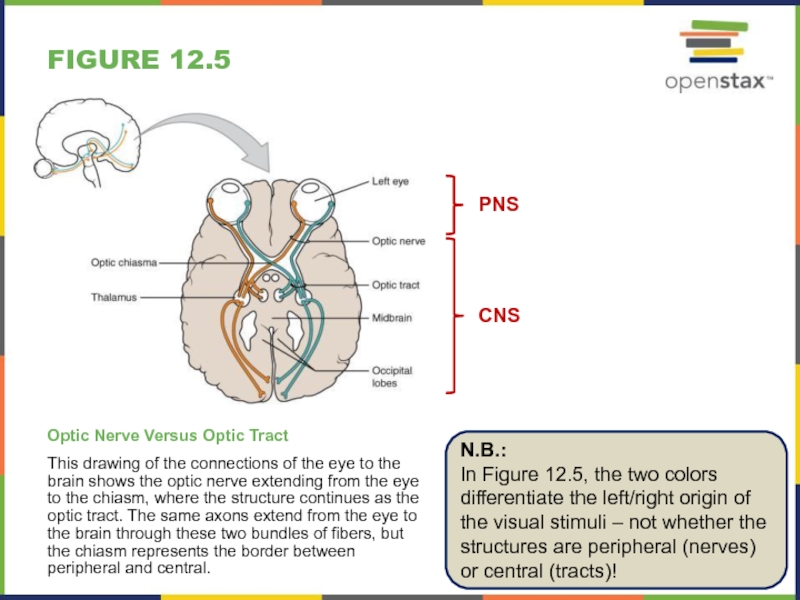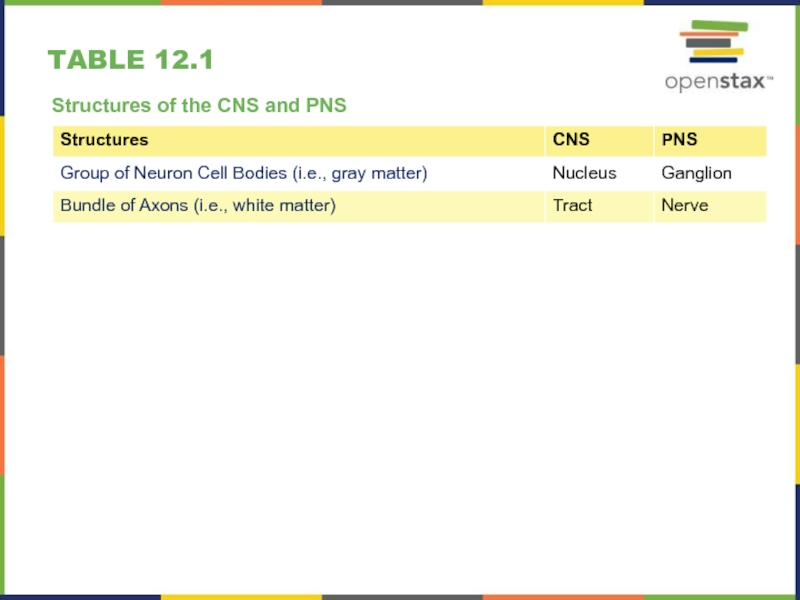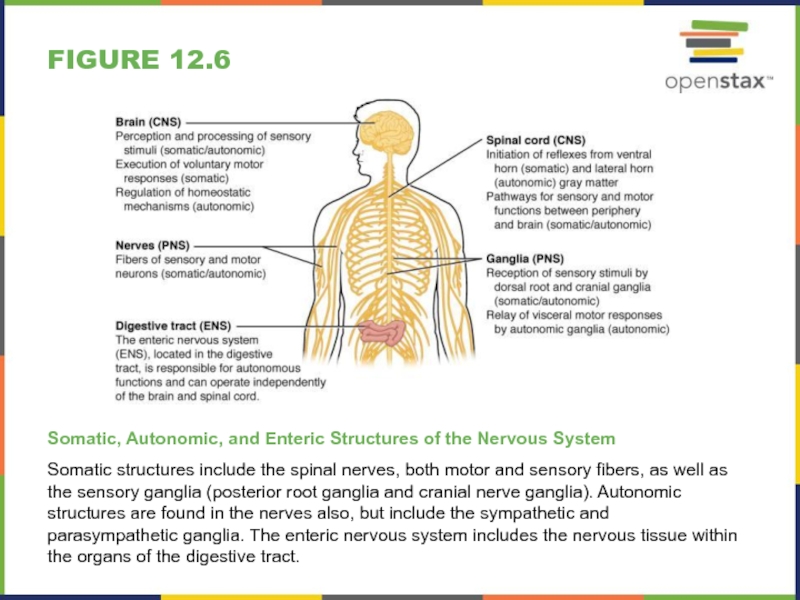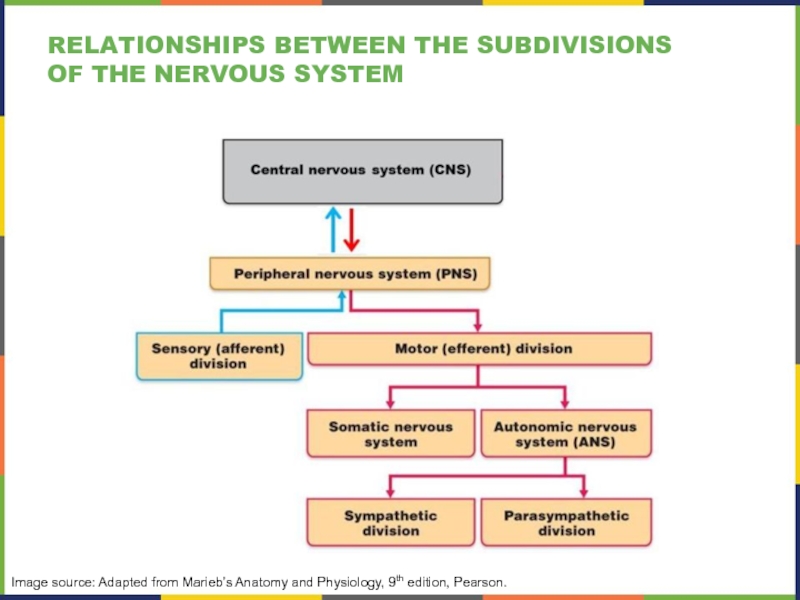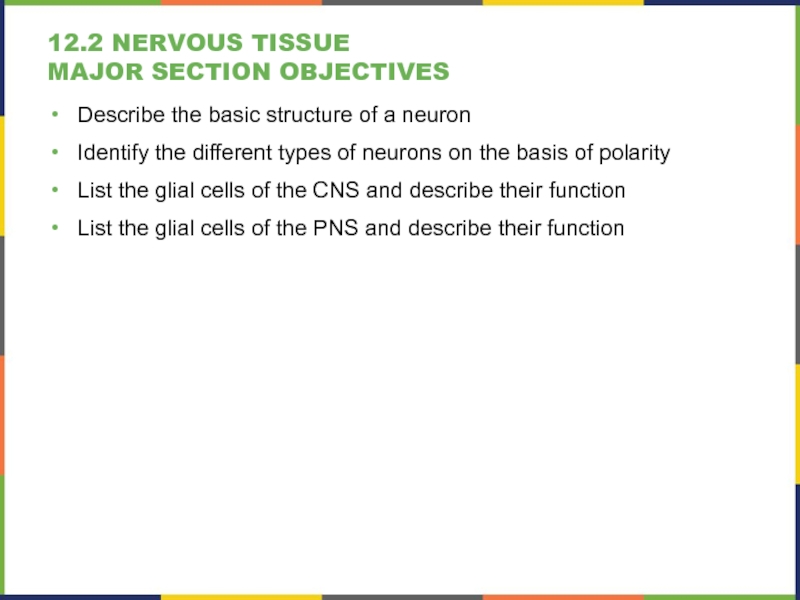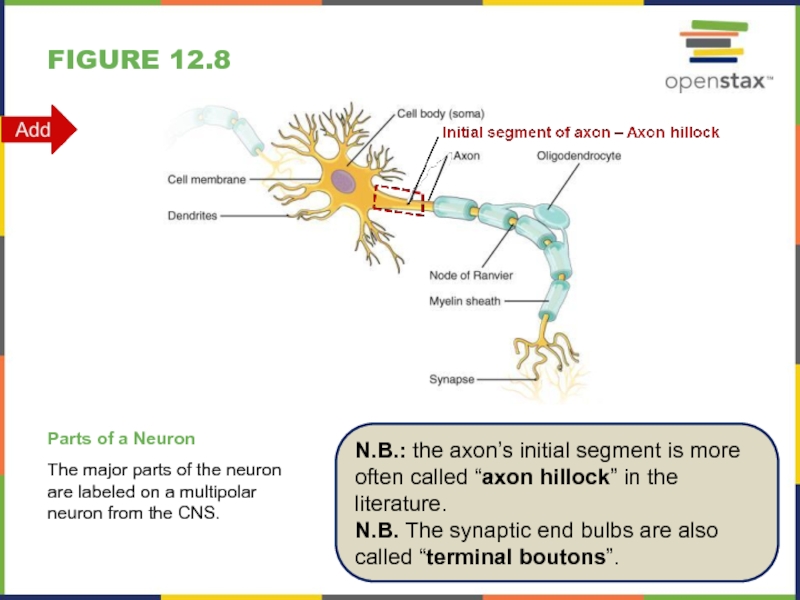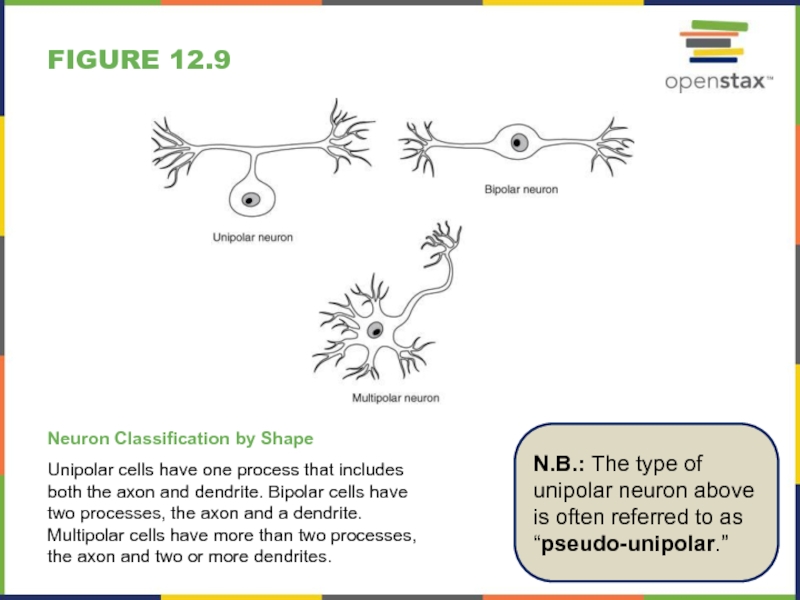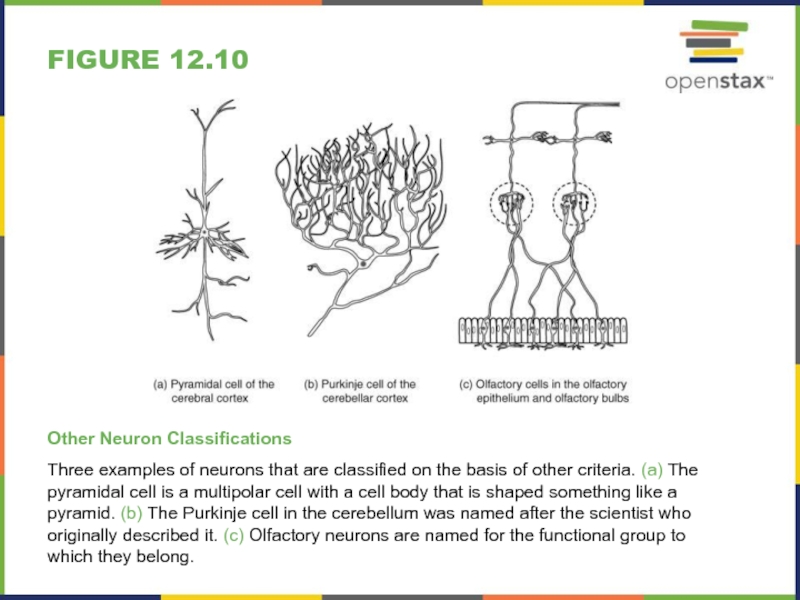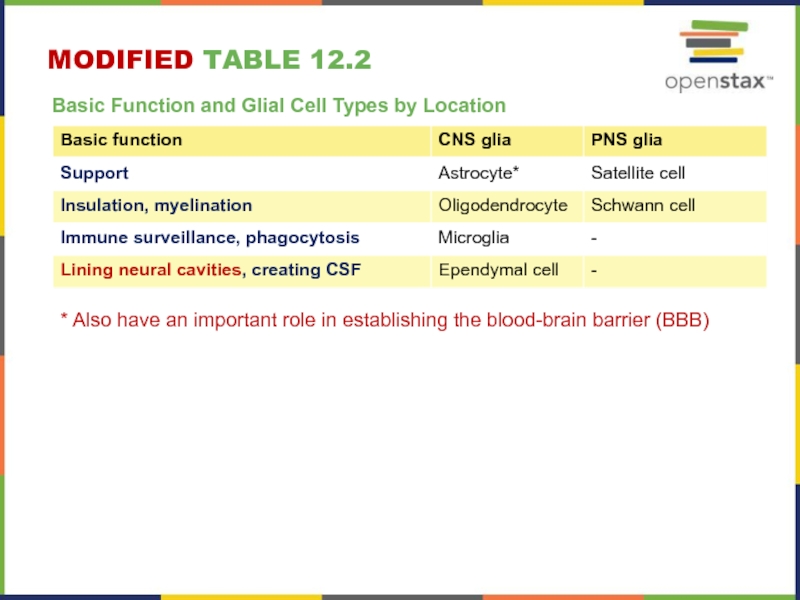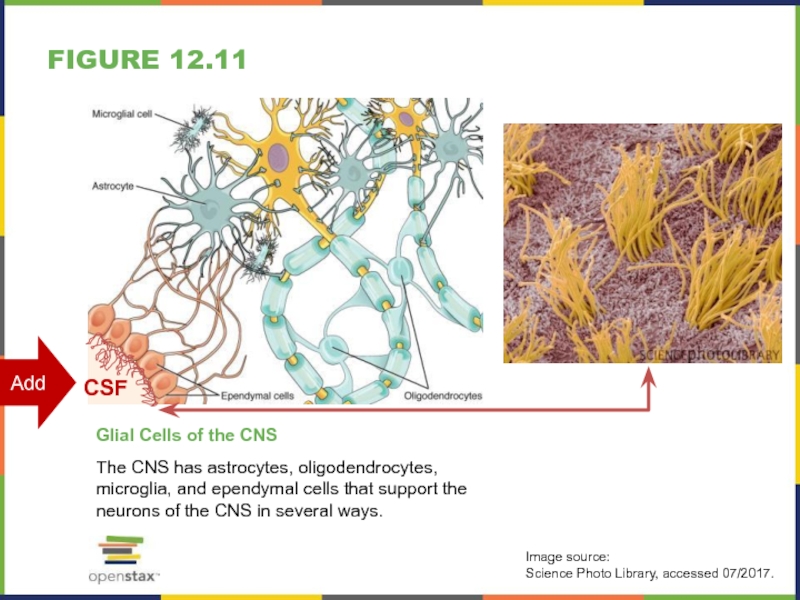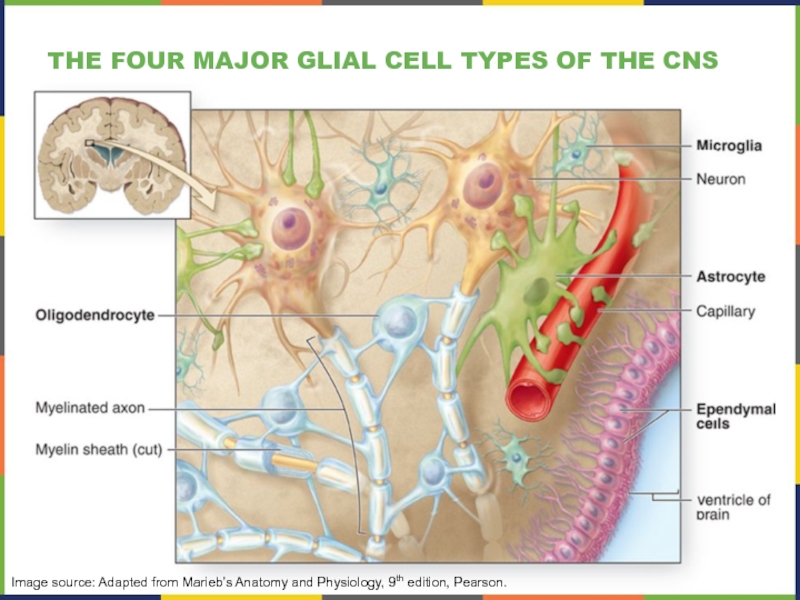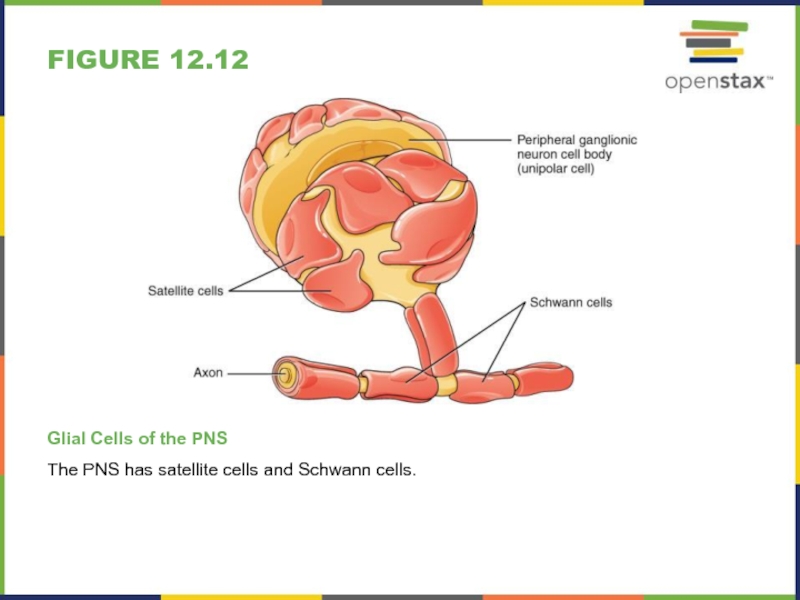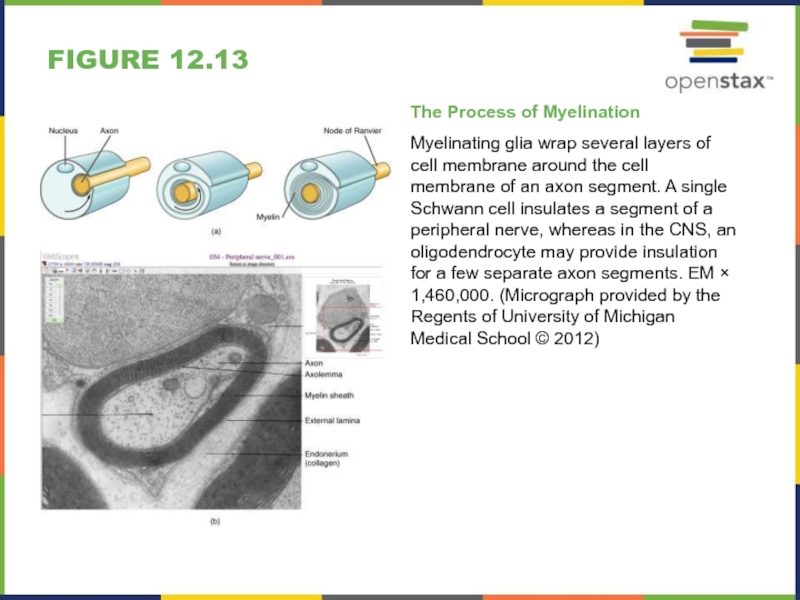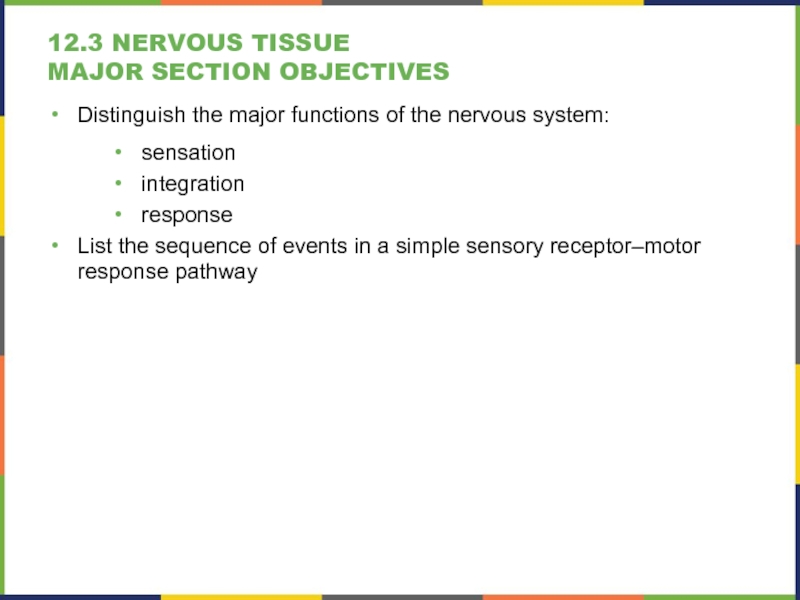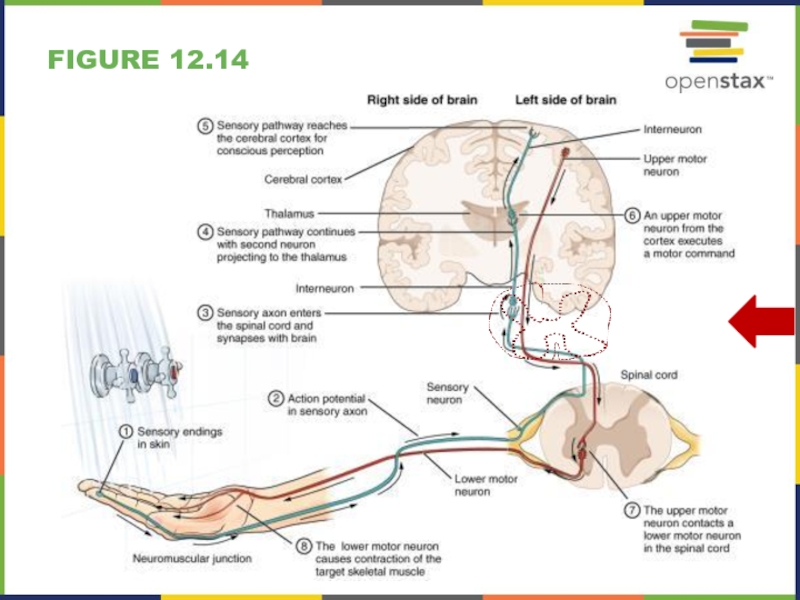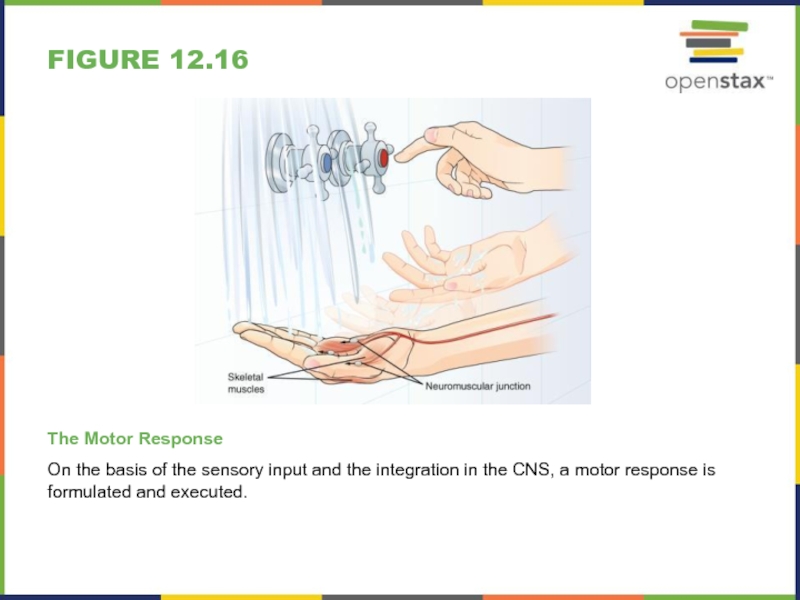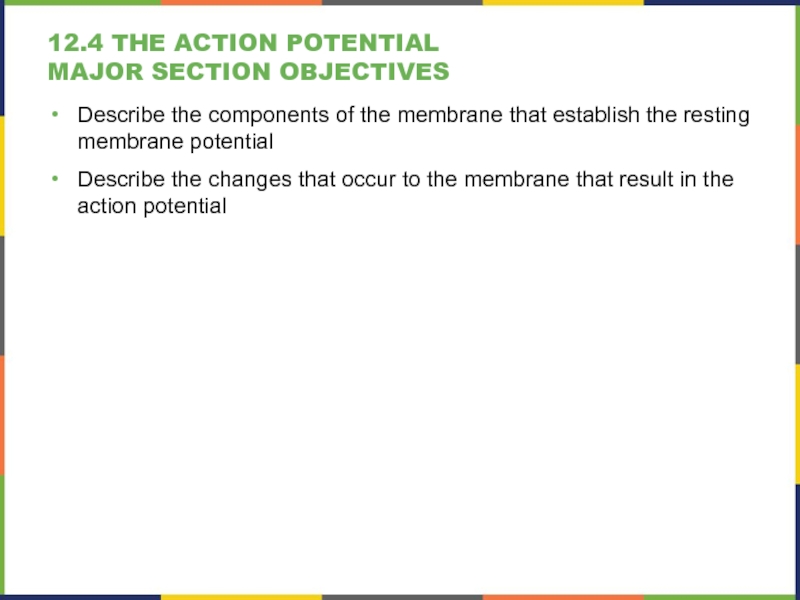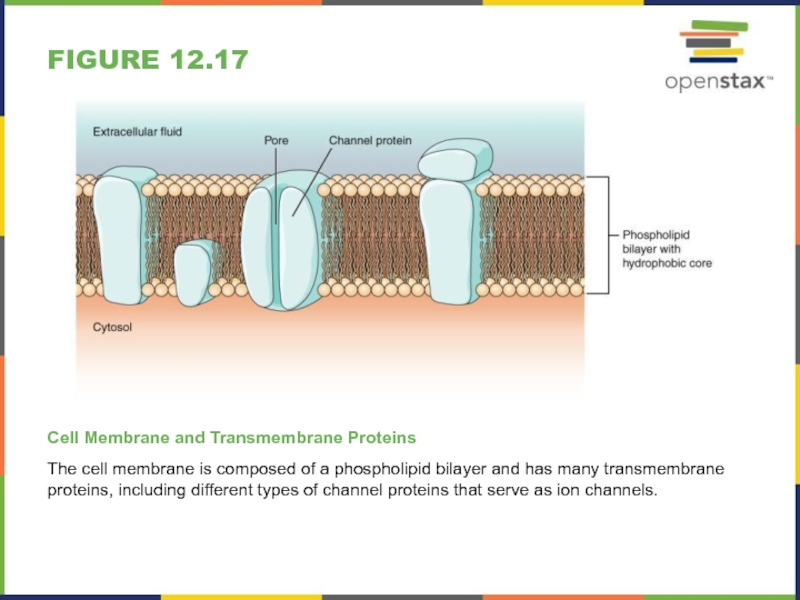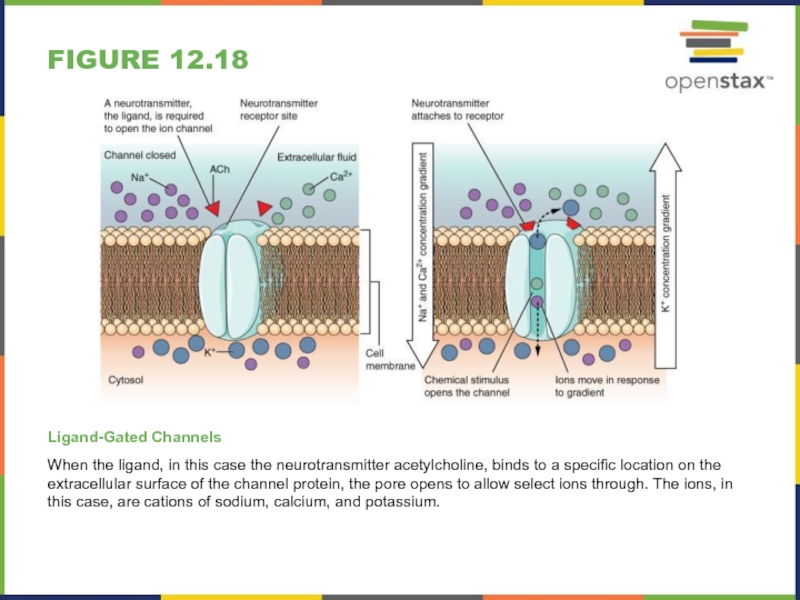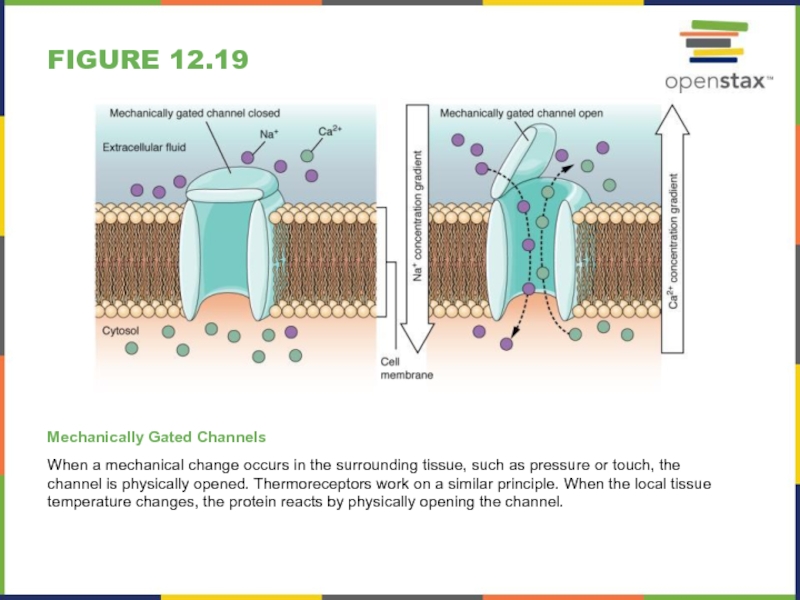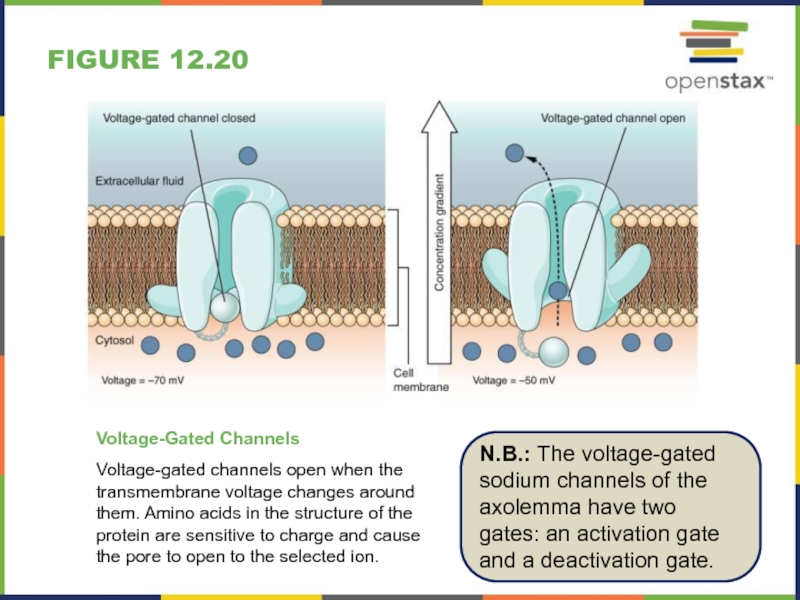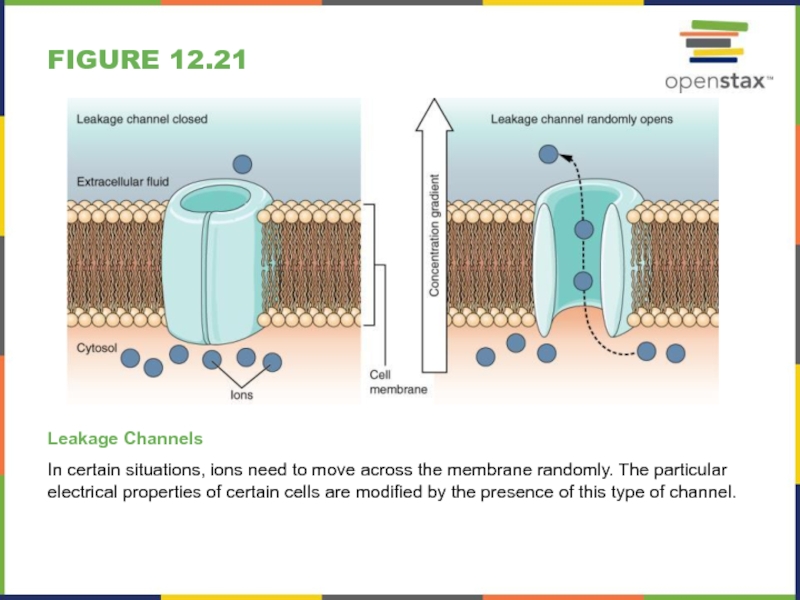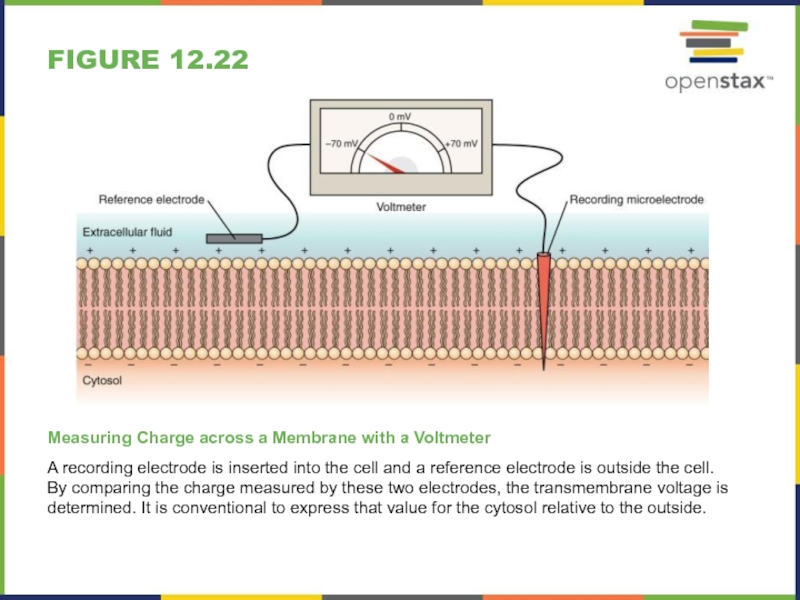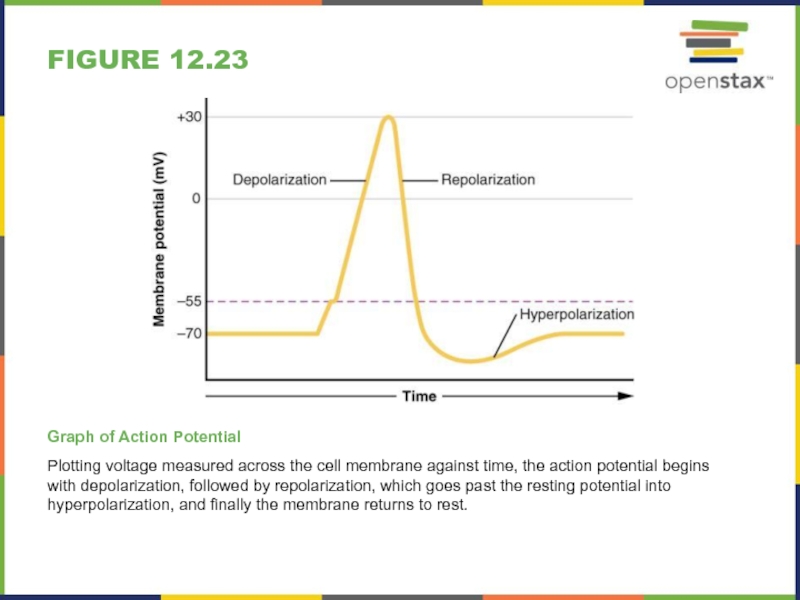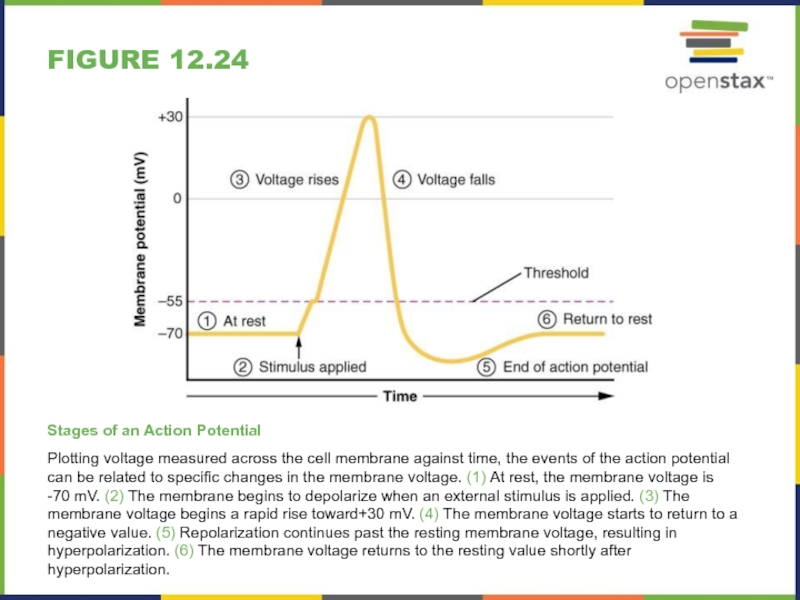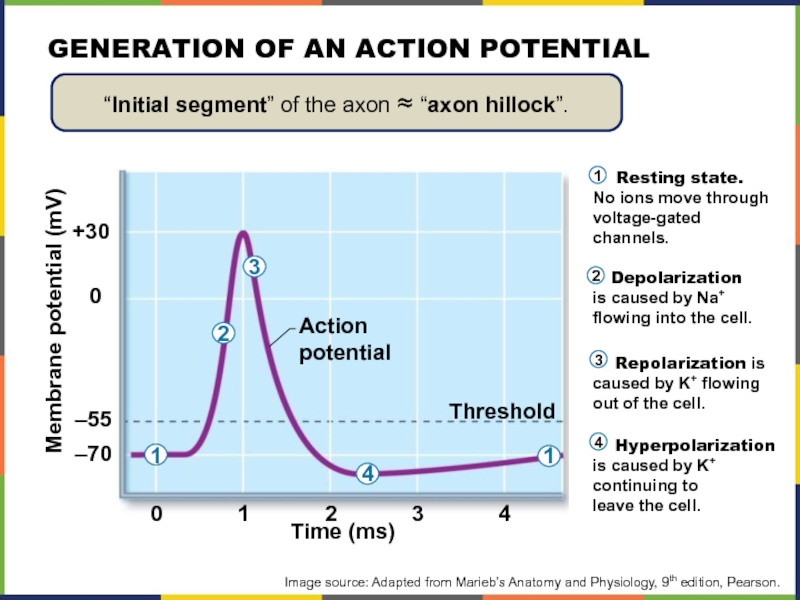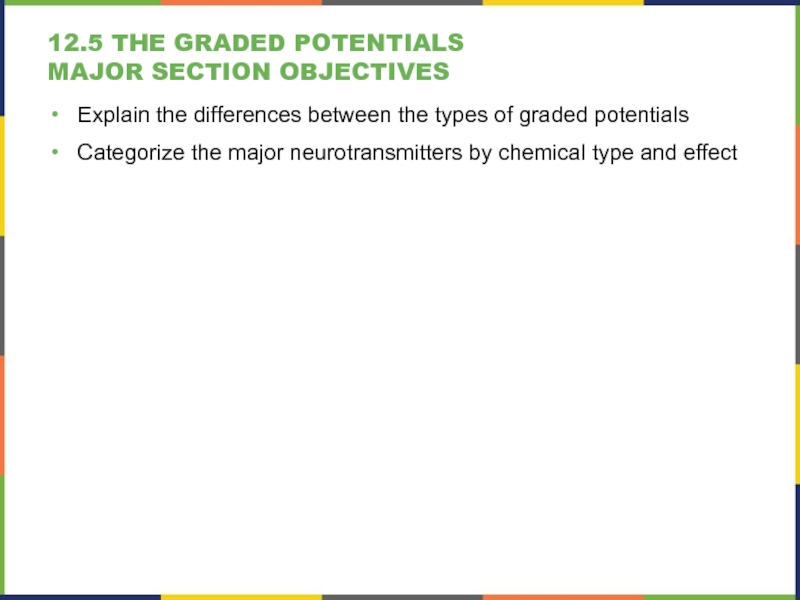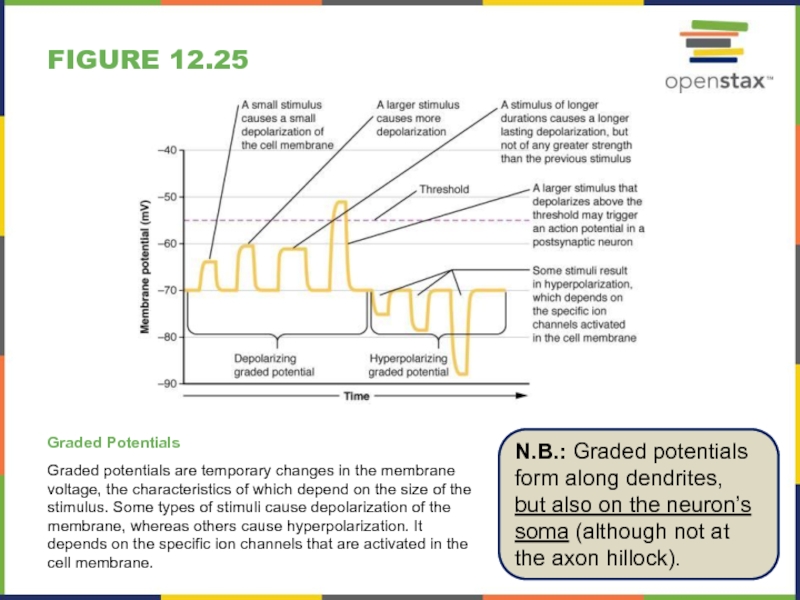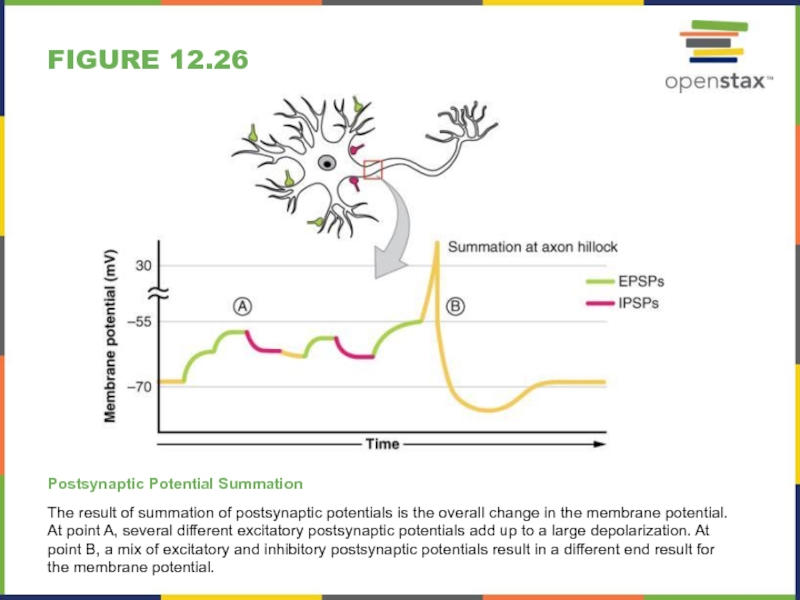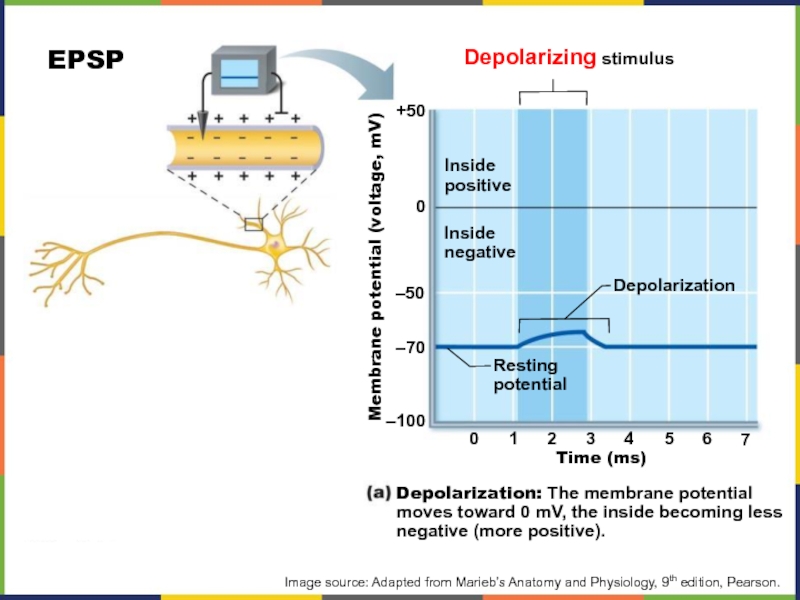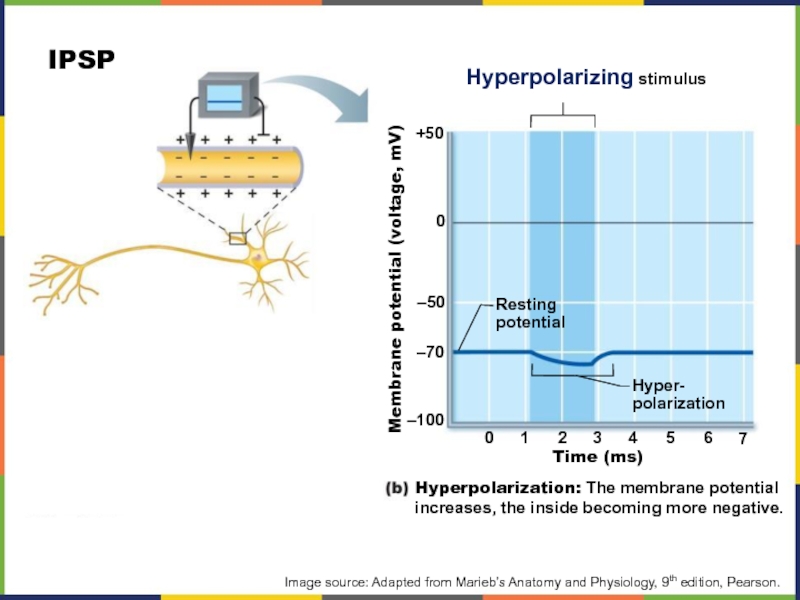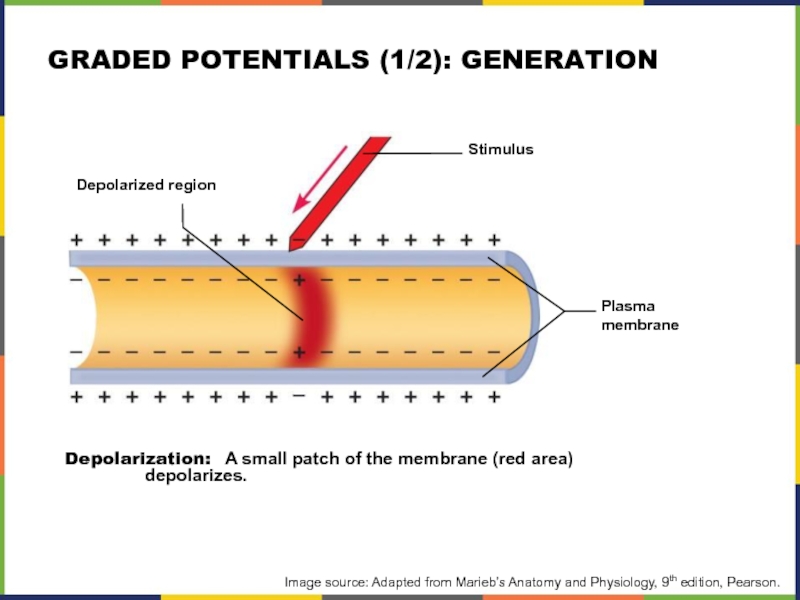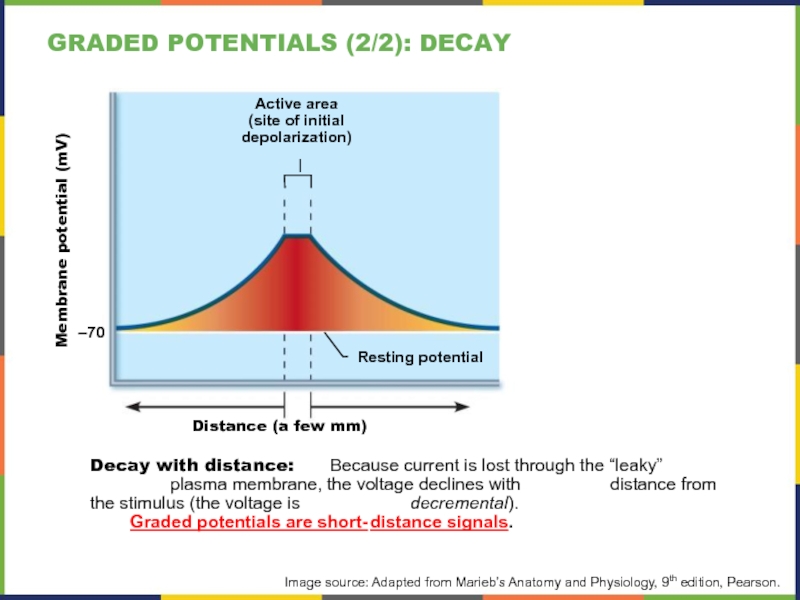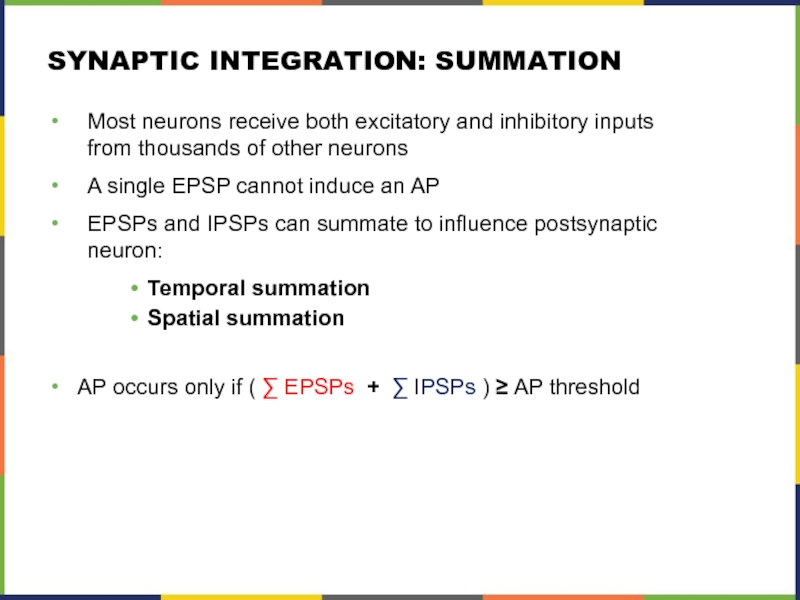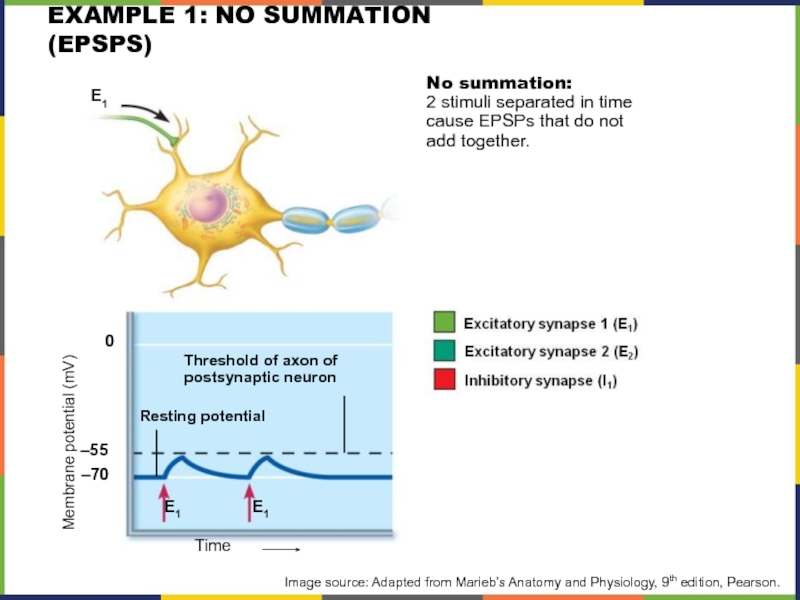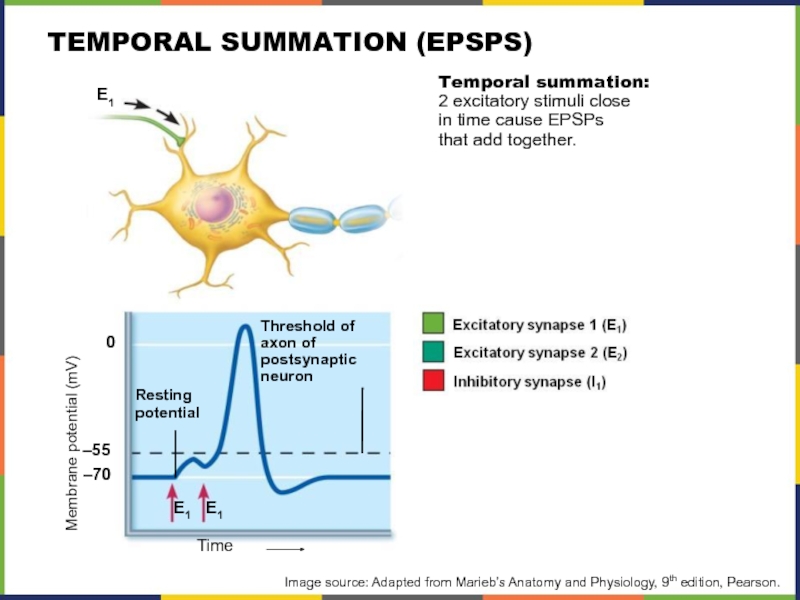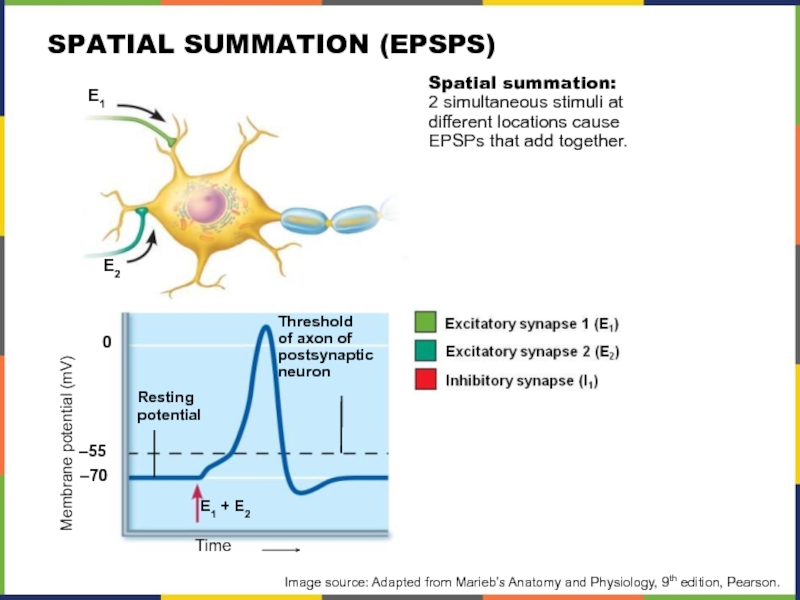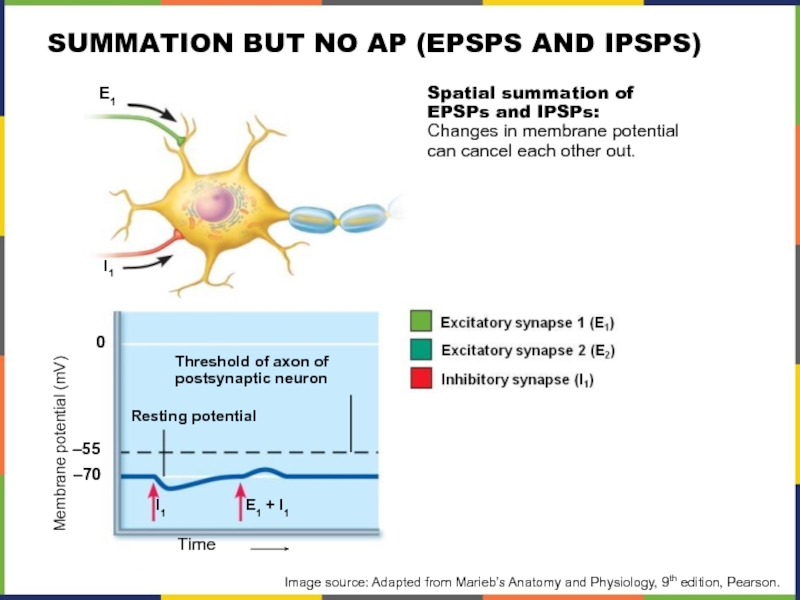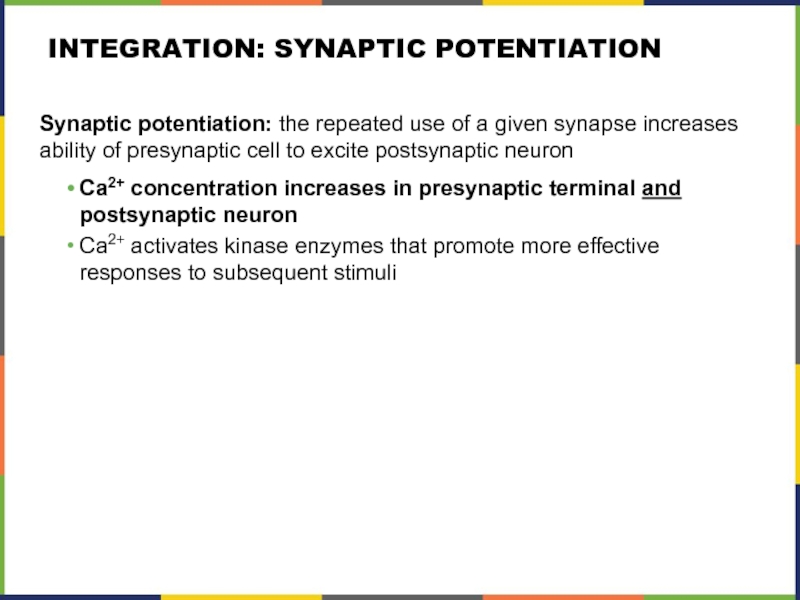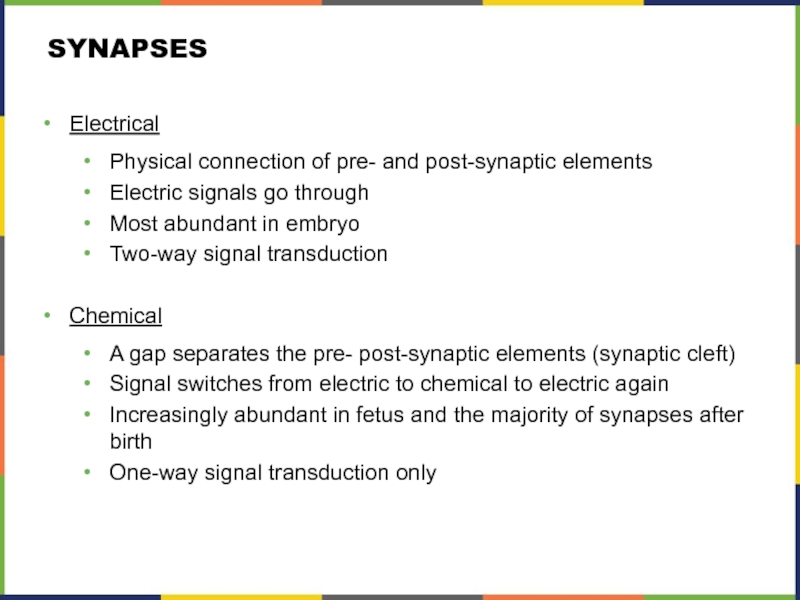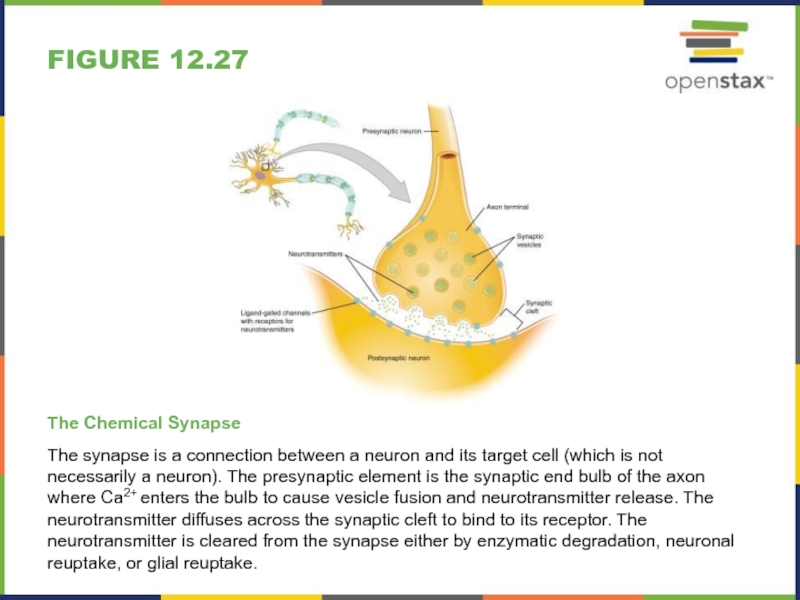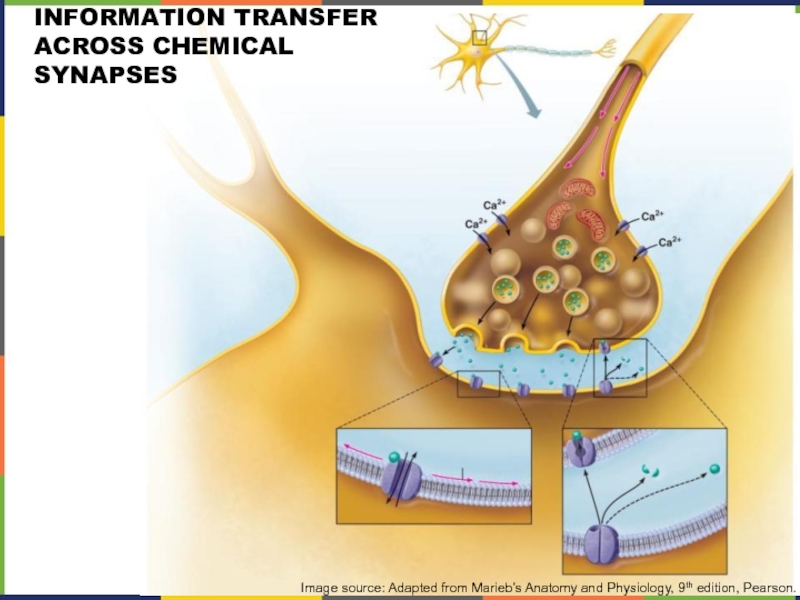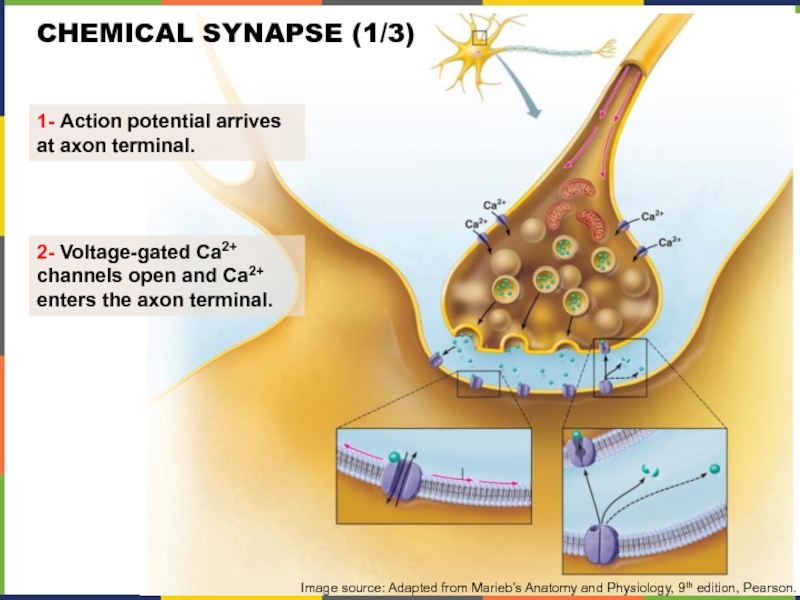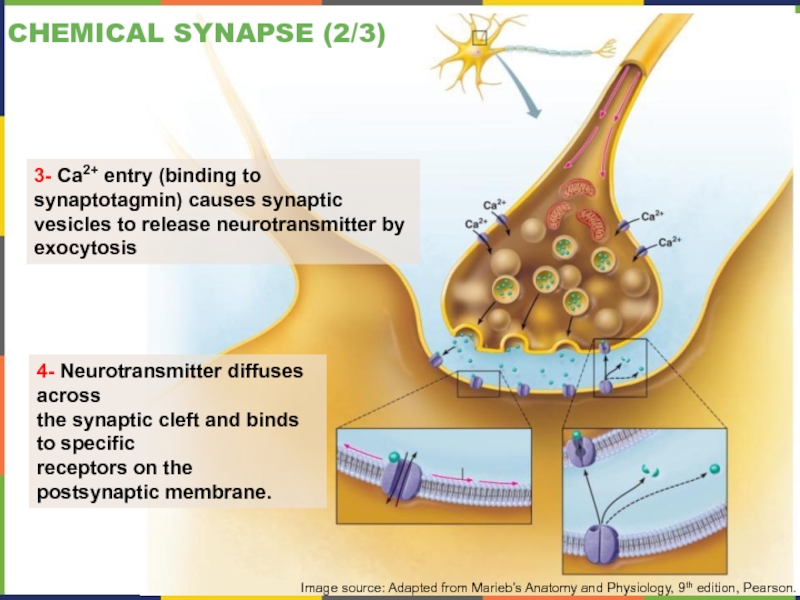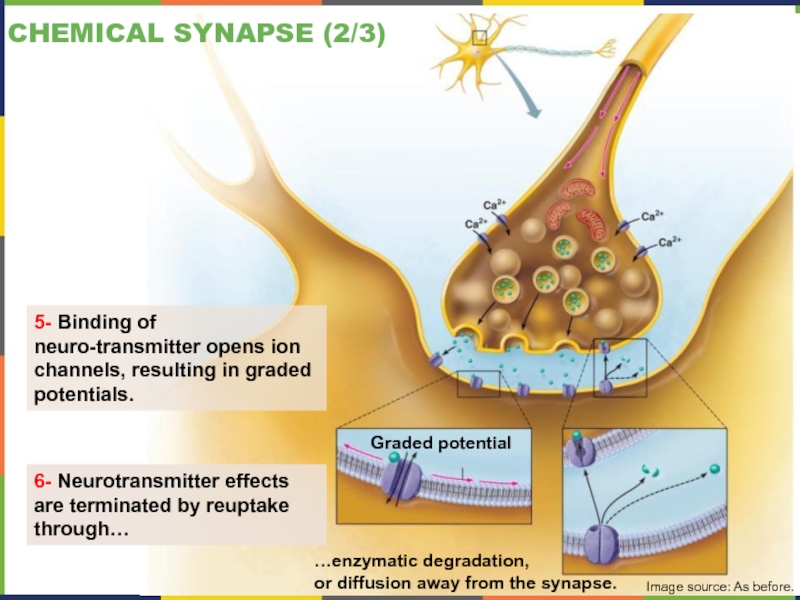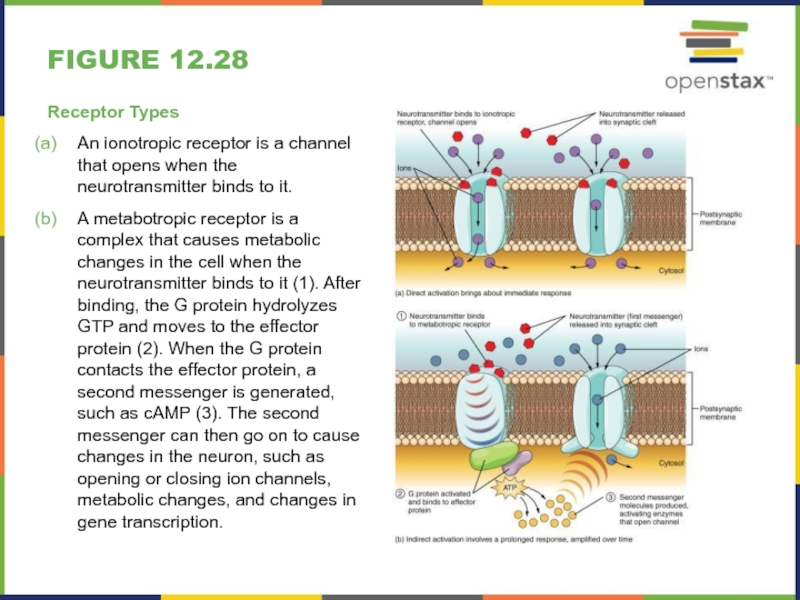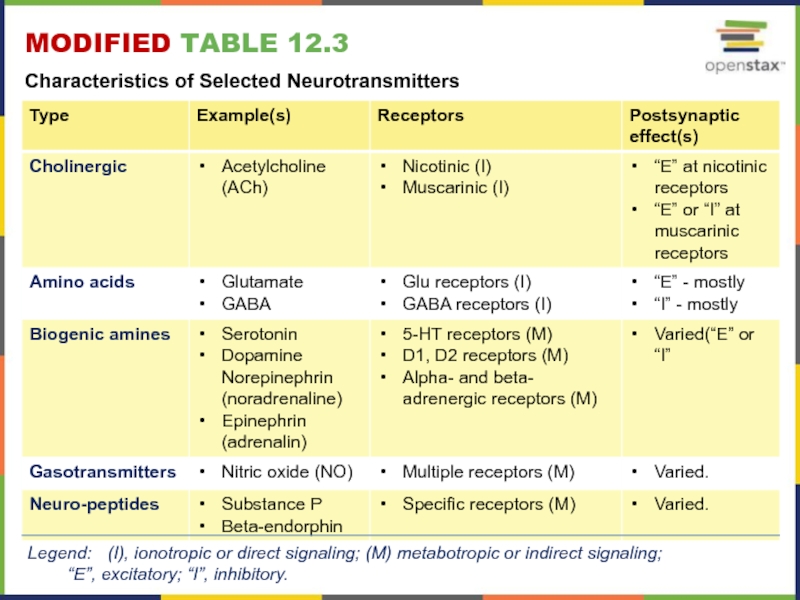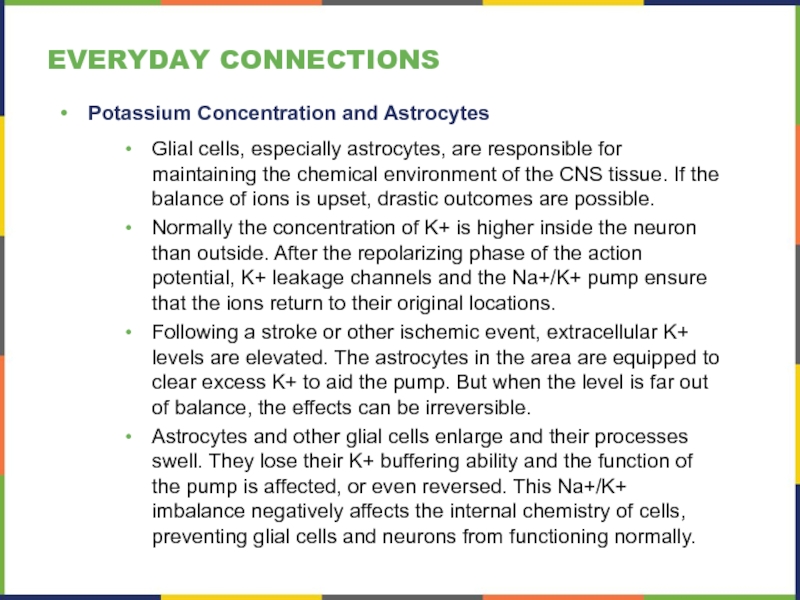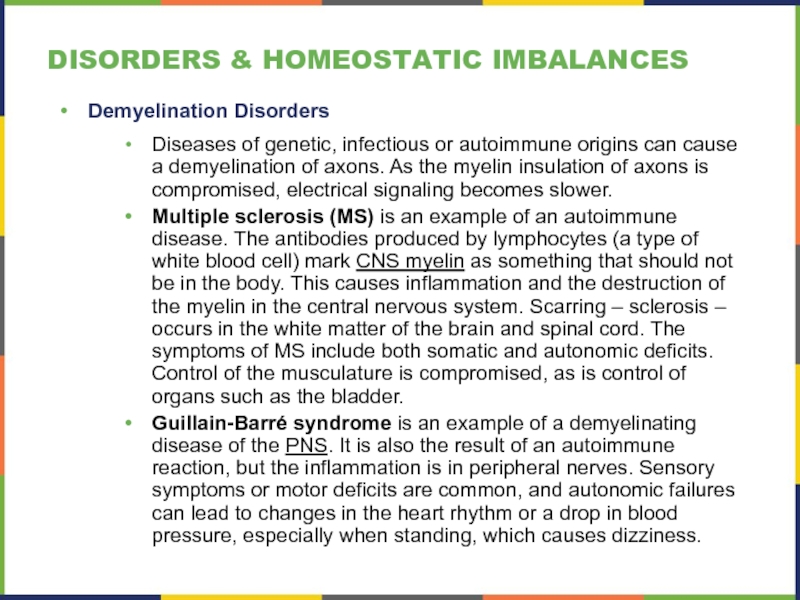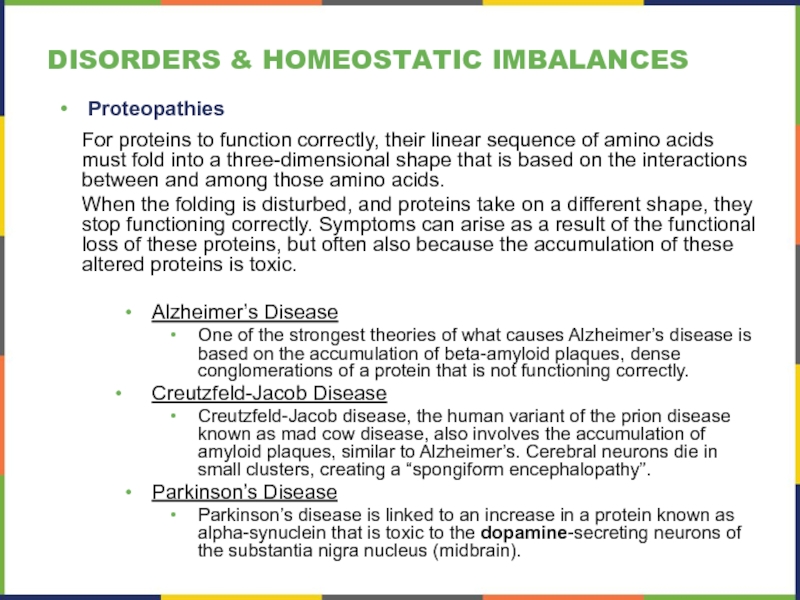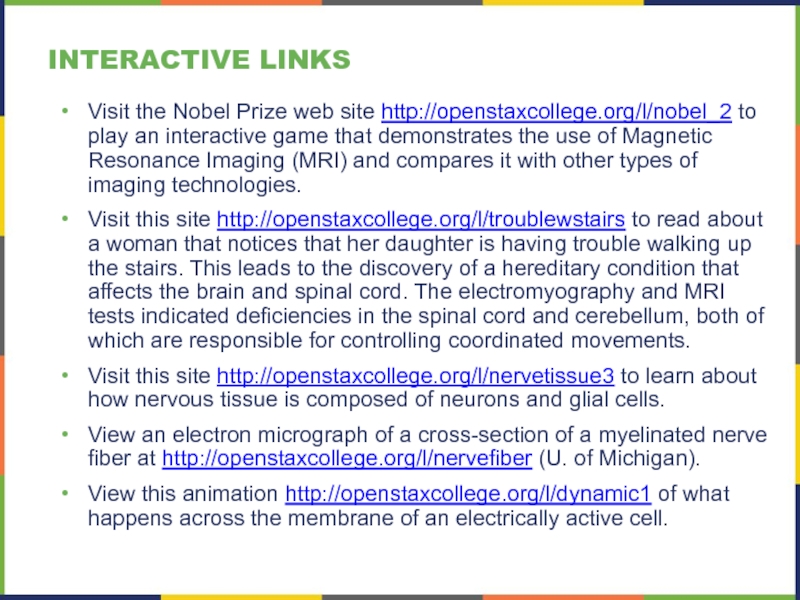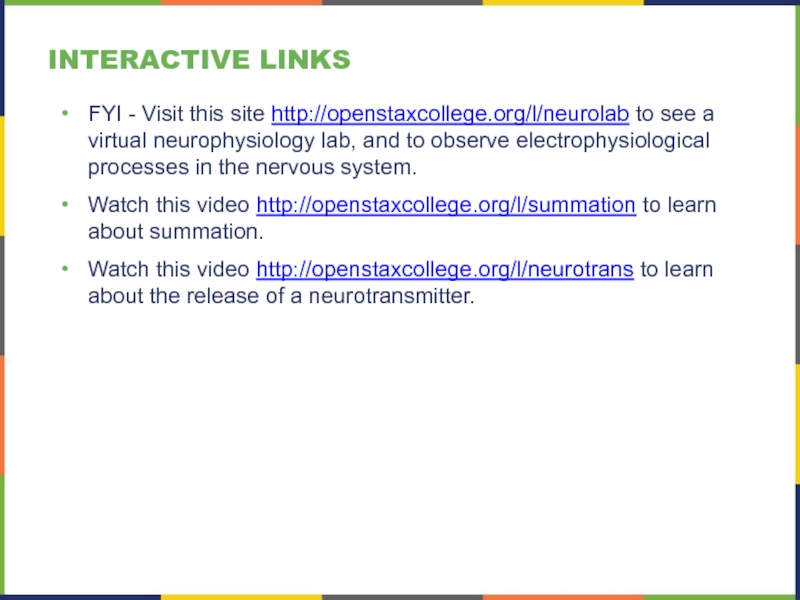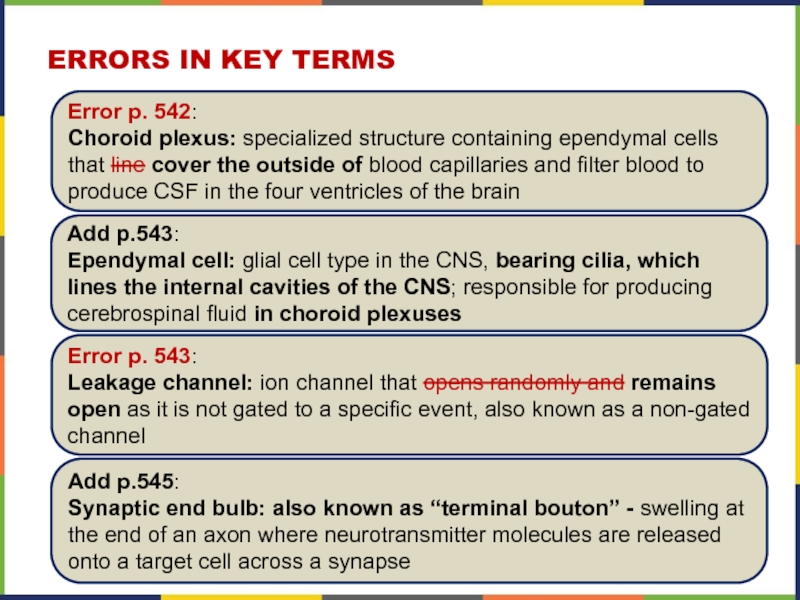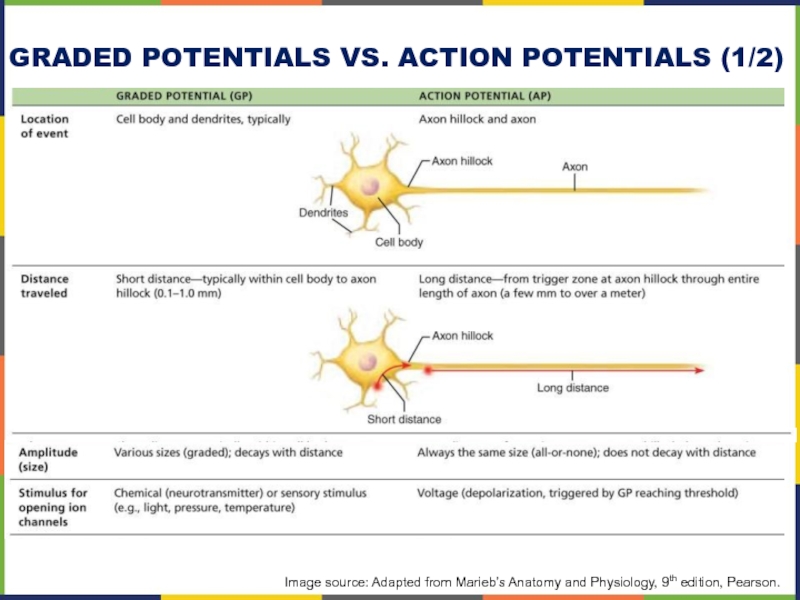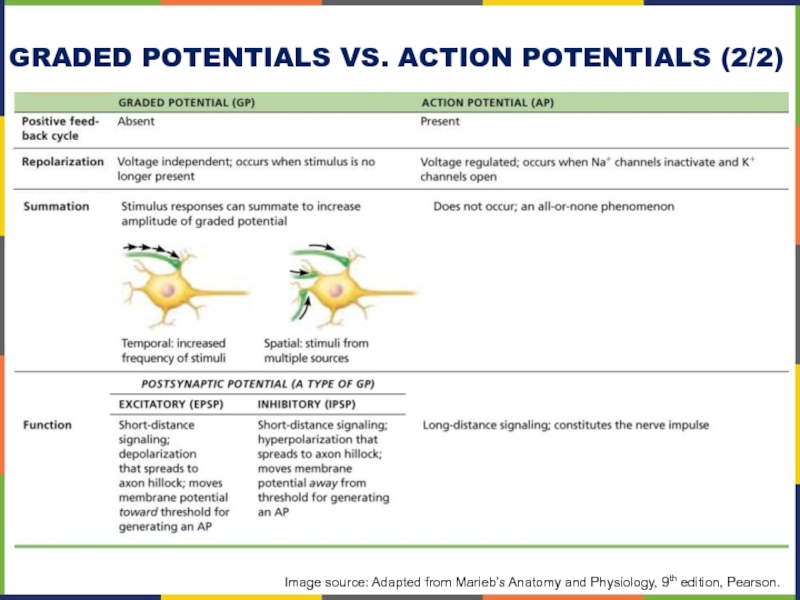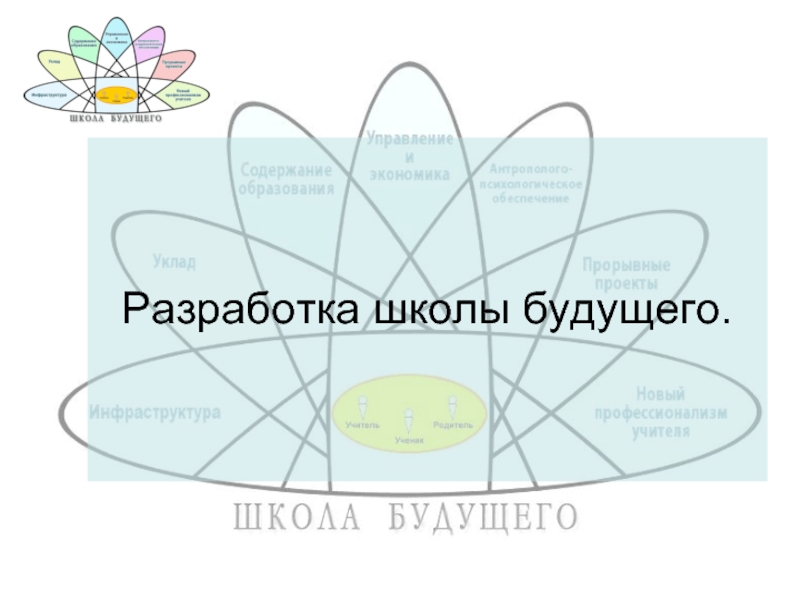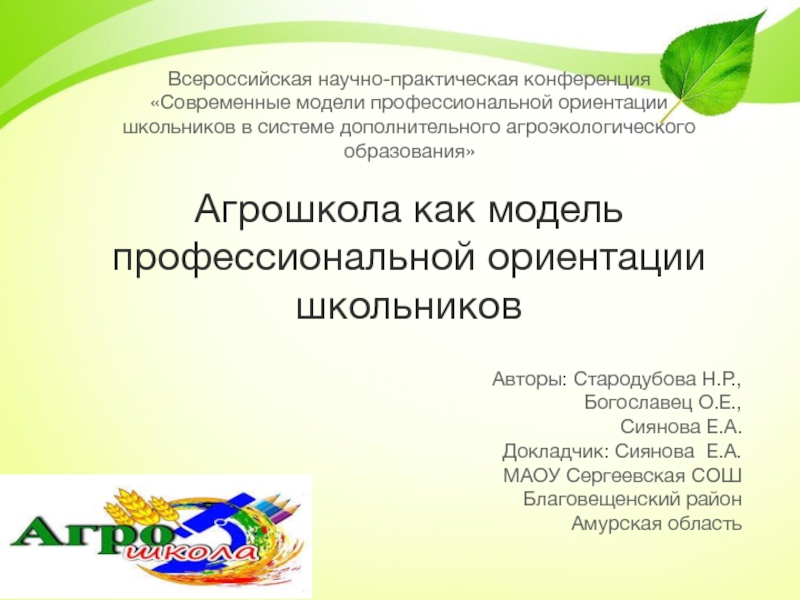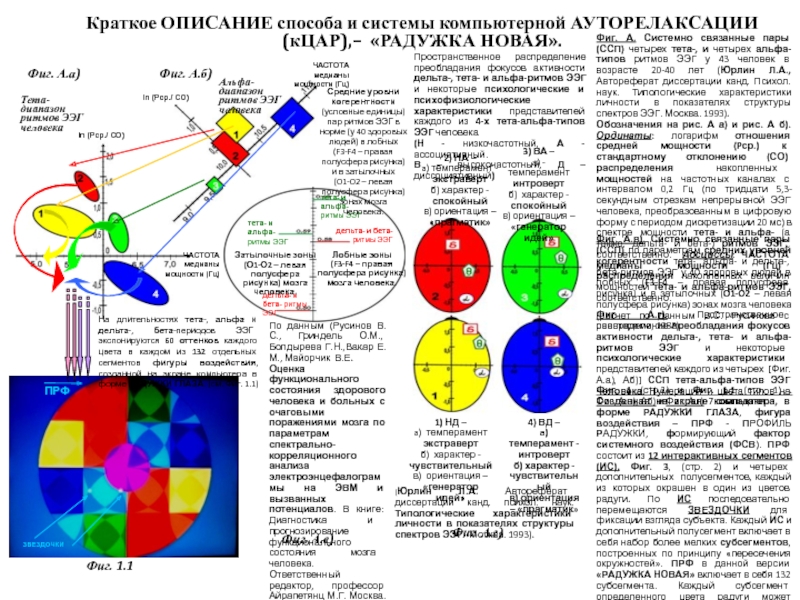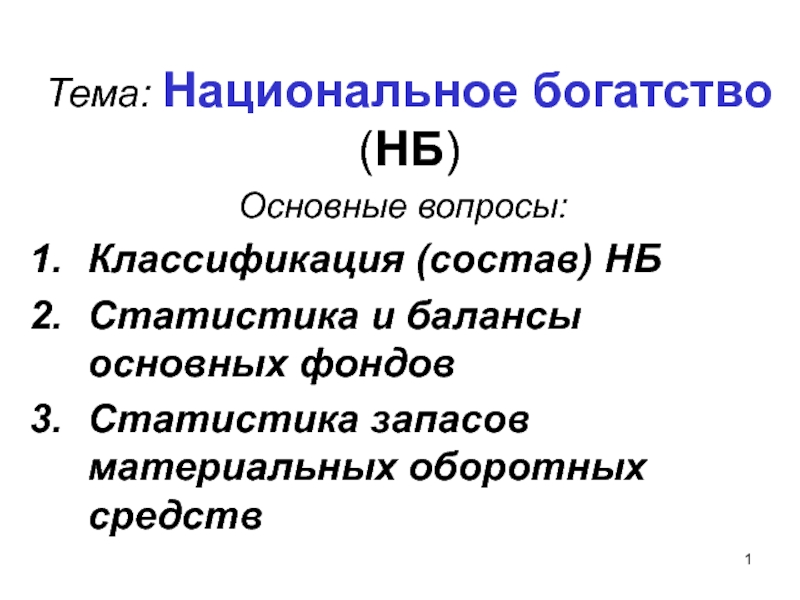Разделы презентаций
- Разное
- Английский язык
- Астрономия
- Алгебра
- Биология
- География
- Геометрия
- Детские презентации
- Информатика
- История
- Литература
- Математика
- Медицина
- Менеджмент
- Музыка
- МХК
- Немецкий язык
- ОБЖ
- Обществознание
- Окружающий мир
- Педагогика
- Русский язык
- Технология
- Физика
- Философия
- Химия
- Шаблоны, картинки для презентаций
- Экология
- Экономика
- Юриспруденция
ANATOMY & PHYSIOLOGY Chapter 12 THE NERVOUS SYSTEM AND NERVOUS
Содержание
- 1. ANATOMY & PHYSIOLOGY Chapter 12 THE NERVOUS SYSTEM AND NERVOUS
- 2. MAJOR CHAPTER ObjectivesName the major divisions of
- 3. 12.1 Basic Structure and Function of the
- 4. Figure 12.2Central and Peripheral Nervous SystemThe structures
- 5. Figure 12.3Gray Matter and White MatterA brain
- 6. Figure 12.4What Is a Nucleus?The nucleus of
- 7. Figure 12.5Optic Nerve Versus Optic TractThis drawing
- 8. table 12.1Structures of the CNS and PNS
- 9. Figure 12.6Somatic, Autonomic, and Enteric Structures of
- 10. Image source: Adapted from Marieb’s Anatomy and
- 11. 12.2 Nervous Tissue Major section ObjectivesDescribe the
- 12. Figure 12.8Parts of a NeuronThe major parts
- 13. Figure 12.9Neuron Classification by ShapeUnipolar cells have
- 14. Figure 12.10Other Neuron ClassificationsThree examples of neurons
- 15. MODIFIED table 12.2Basic Function and Glial Cell
- 16. Figure 12.11Glial Cells of the CNSThe CNS
- 17. The Four Major Glial Cell Types of
- 18. Figure 12.12Glial Cells of the PNSThe PNS has satellite cells and Schwann cells.
- 19. Figure 12.13The Process of MyelinationMyelinating glia wrap
- 20. 12.3 Nervous Tissue Major section ObjectivesDistinguish the
- 21. Figure 12.14
- 22. Figure 12.15The Sensory InputReceptors in the skin sense the temperature of the water.
- 23. Figure 12.16The Motor ResponseOn the basis of
- 24. 12.4 The Action Potential Major section ObjectivesDescribe
- 25. Figure 12.17Cell Membrane and Transmembrane ProteinsThe cell
- 26. Figure 12.18Ligand-Gated ChannelsWhen the ligand, in this
- 27. Figure 12.19Mechanically Gated ChannelsWhen a mechanical change
- 28. Figure 12.20Voltage-Gated ChannelsVoltage-gated channels open when the
- 29. Figure 12.21Leakage ChannelsIn certain situations, ions need
- 30. Figure 12.22Measuring Charge across a Membrane with
- 31. Figure 12.23Graph of Action PotentialPlotting voltage measured
- 32. Figure 12.24Stages of an Action PotentialPlotting voltage
- 33. Generation of an Action Potential
- 34. 12.5 The Graded Potentials Major section ObjectivesExplain
- 35. Figure 12.25Graded PotentialsGraded potentials are temporary changes
- 36. Figure 12.26Postsynaptic Potential SummationThe result of summation
- 37. Depolarizing stimulusInsidepositiveInsidenegativeDepolarizationRestingpotentialMembrane potential (voltage, mV)Depolarization: The membrane
- 38. Hyperpolarizing stimulusMembrane potential (voltage, mV)Time (ms)+500–50–70–10001234567Hyperpolarization: The
- 39. StimulusDepolarized regionPlasmamembraneDepolarization: A small patch of the
- 40. Active area(site of initialdepolarization)Resting potentialMembrane potential (mV)Distance
- 41. Synaptic Integration: SummationMost neurons receive both excitatory
- 42. Example 1: No summation (EPSPs)Image source: Adapted from Marieb’s Anatomy and Physiology, 9th edition, Pearson.
- 43. Temporal summation (EPSPs)Image source: Adapted from Marieb’s Anatomy and Physiology, 9th edition, Pearson.
- 44. Spatial summation (EPSPs)Image source: Adapted from Marieb’s Anatomy and Physiology, 9th edition, Pearson.
- 45. Summation but no AP (EPSPs and IPSPs)Image
- 46. Integration: Synaptic PotentiationSynaptic potentiation: the repeated use
- 47. SynapsesElectricalPhysical connection of pre- and post-synaptic elementsElectric
- 48. Figure 12.27The Chemical SynapseThe synapse is a
- 49. Information Transfer Across Chemical SynapsesImage source: Adapted from Marieb’s Anatomy and Physiology, 9th edition, Pearson.
- 50. Chemical Synapse (1/3)1- Action potential arrives at
- 51. Chemical Synapse (2/3)3- Ca2+ entry (binding to
- 52. Chemical Synapse (2/3)Graded potential5- Binding of neuro-transmitter
- 53. Figure 12.28Receptor TypesAn ionotropic receptor is a
- 54. MODIFIED table 12.3 Characteristics of Selected NeurotransmittersLegend:
- 55. everyday connectionsPotassium Concentration and AstrocytesGlial cells, especially
- 56. disorders & homeostatic imbalancesDemyelination DisordersDiseases of genetic,
- 57. disorders & homeostatic imbalancesProteopathiesFor proteins to function
- 58. interactive linksVisit the Nobel Prize web site
- 59. interactive linksFYI - Visit this site http://openstaxcollege.org/l/neurolab
- 60. Errors in key termsError p. 542: Choroid
- 61. This PowerPoint presentation is copyright 2011-2015, Rice
- 62. Graded Potentials vs. Action Potentials (1/2)Image source: Adapted from Marieb’s Anatomy and Physiology, 9th edition, Pearson.
- 63. Graded Potentials vs. Action Potentials (2/2)Image source: Adapted from Marieb’s Anatomy and Physiology, 9th edition, Pearson.
- 64. Скачать презентанцию
Слайды и текст этой презентации
Слайд 1ANATOMY & PHYSIOLOGY
Chapter 12 THE NERVOUS SYSTEM AND NERVOUS TISSUE
PowerPoint
Image Slideshow
Слайд 2MAJOR CHAPTER Objectives
Name the major divisions of the nervous system,
both anatomical and functional
Describe the functional and structural differences between
gray matter and white matter structuresName the parts of the multipolar neuron in order of polarity
List the types of glial cells and assign each to the proper division of the nervous system, along with their function(s)
Distinguish the major functions of the nervous system: sensation, integration, and response
Describe the components of the membrane that establish the resting membrane potential
Describe the changes that occur to the membrane that result in the action potential
Explain the differences between types of graded potentials
Categorize the major neurotransmitters by chemical type and effect
Add:
Be able to discuss normal development and selected aging issues
Be able to discuss selected, associated disorders
Слайд 312.1 Basic Structure and Function of the Nervous System Major section
Objectives
Identify the anatomical and functional divisions of the nervous system
Central
(CNS)Peripheral (PNS)
or
Somatic (SNS)
Autonomic (ANS)
Relate the functional and structural differences between gray matter and white matter structures of the nervous system to the structure of neurons
List the basic functions of the nervous system
Sensation (Input / Afferent signaling)
Integration (Analysis)
Response (Output / Efferent signaling)
Слайд 4Figure 12.2
Central and Peripheral Nervous System
The structures of the PNS
are referred to as ganglia and nerves, which can be
seen as distinct structures. The equivalent structures in the CNS are not obvious from this overall perspective and are best examined in prepared tissue under the microscope.Слайд 5Figure 12.3
Gray Matter and White Matter
A brain removed during an
autopsy, with a partial section removed, shows white matter surrounded
by gray matter. Gray matter makes up the outer cortex of the brain. (credit: modification of work by “Suseno”/Wikimedia Commons)Слайд 6Figure 12.4
What Is a Nucleus?
The nucleus of an atom contains
its protons and neutrons.
The nucleus of a cell is the
organelle that contains DNA.A nucleus in the CNS is a localized center of function with the cell bodies of several neurons, shown here circled in red. (credit c: “Was a bee”/Wikimedia Commons)
Слайд 7Figure 12.5
Optic Nerve Versus Optic Tract
This drawing of the connections
of the eye to the brain shows the optic nerve
extending from the eye to the chiasm, where the structure continues as the optic tract. The same axons extend from the eye to the brain through these two bundles of fibers, but the chiasm represents the border between peripheral and central.N.B.:
In Figure 12.5, the two colors differentiate the left/right origin of the visual stimuli – not whether the structures are peripheral (nerves) or central (tracts)!
Слайд 9Figure 12.6
Somatic, Autonomic, and Enteric Structures of the Nervous System
Somatic
structures include the spinal nerves, both motor and sensory fibers,
as well as the sensory ganglia (posterior root ganglia and cranial nerve ganglia). Autonomic structures are found in the nerves also, but include the sympathetic and parasympathetic ganglia. The enteric nervous system includes the nervous tissue within the organs of the digestive tract.Слайд 10Image source: Adapted from Marieb’s Anatomy and Physiology, 9th edition,
Pearson.
Relationships between the subdivisions of the nervous system
Слайд 1112.2 Nervous Tissue
Major section Objectives
Describe the basic structure of a
neuron
Identify the different types of neurons on the basis of
polarityList the glial cells of the CNS and describe their function
List the glial cells of the PNS and describe their function
Слайд 12Figure 12.8
Parts of a Neuron
The major parts of the neuron
are labeled on a multipolar neuron from the CNS.
N.B.: the
axon’s initial segment is more often called “axon hillock” in the literature.N.B. The synaptic end bulbs are also called “terminal boutons”.
Слайд 13Figure 12.9
Neuron Classification by Shape
Unipolar cells have one process that
includes both the axon and dendrite. Bipolar cells have two
processes, the axon and a dendrite. Multipolar cells have more than two processes, the axon and two or more dendrites.N.B.: The type of unipolar neuron above is often referred to as “pseudo-unipolar.”
Слайд 14Figure 12.10
Other Neuron Classifications
Three examples of neurons that are classified
on the basis of other criteria. (a) The pyramidal cell
is a multipolar cell with a cell body that is shaped something like a pyramid. (b) The Purkinje cell in the cerebellum was named after the scientist who originally described it. (c) Olfactory neurons are named for the functional group to which they belong.Слайд 15MODIFIED table 12.2
Basic Function and Glial Cell Types by Location
*
Also have an important role in establishing the blood-brain barrier
(BBB)Слайд 16Figure 12.11
Glial Cells of the CNS
The CNS has astrocytes, oligodendrocytes,
microglia, and ependymal cells that support the neurons of the
CNS in several ways.Image source:
Science Photo Library, accessed 07/2017.
Слайд 17The Four Major Glial Cell Types of the CNS
Image source:
Adapted from Marieb’s Anatomy and Physiology, 9th edition, Pearson.
Слайд 19Figure 12.13
The Process of Myelination
Myelinating glia wrap several layers of
cell membrane around the cell membrane of an axon segment.
A single Schwann cell insulates a segment of a peripheral nerve, whereas in the CNS, an oligodendrocyte may provide insulation for a few separate axon segments. EM × 1,460,000. (Micrograph provided by the Regents of University of Michigan Medical School © 2012)Слайд 2012.3 Nervous Tissue
Major section Objectives
Distinguish the major functions of the
nervous system:
sensation
integration
response
List the sequence of events in a simple
sensory receptor–motor response pathwayСлайд 23Figure 12.16
The Motor Response
On the basis of the sensory input
and the integration in the CNS, a motor response is
formulated and executed.Слайд 2412.4 The Action Potential
Major section Objectives
Describe the components of the
membrane that establish the resting membrane potential
Describe the changes that
occur to the membrane that result in the action potentialСлайд 25Figure 12.17
Cell Membrane and Transmembrane Proteins
The cell membrane is composed
of a phospholipid bilayer and has many transmembrane proteins, including
different types of channel proteins that serve as ion channels.Слайд 26Figure 12.18
Ligand-Gated Channels
When the ligand, in this case the neurotransmitter
acetylcholine, binds to a specific location on the extracellular surface
of the channel protein, the pore opens to allow select ions through. The ions, in this case, are cations of sodium, calcium, and potassium.Слайд 27Figure 12.19
Mechanically Gated Channels
When a mechanical change occurs in the
surrounding tissue, such as pressure or touch, the channel is
physically opened. Thermoreceptors work on a similar principle. When the local tissue temperature changes, the protein reacts by physically opening the channel.Слайд 28Figure 12.20
Voltage-Gated Channels
Voltage-gated channels open when the transmembrane voltage changes
around them. Amino acids in the structure of the protein
are sensitive to charge and cause the pore to open to the selected ion.N.B.: The voltage-gated sodium channels of the axolemma have two gates: an activation gate and a deactivation gate.
Слайд 29Figure 12.21
Leakage Channels
In certain situations, ions need to move across
the membrane randomly. The particular electrical properties of certain cells
are modified by the presence of this type of channel.Слайд 30Figure 12.22
Measuring Charge across a Membrane with a Voltmeter
A recording
electrode is inserted into the cell and a reference electrode
is outside the cell. By comparing the charge measured by these two electrodes, the transmembrane voltage is determined. It is conventional to express that value for the cytosol relative to the outside.Слайд 31Figure 12.23
Graph of Action Potential
Plotting voltage measured across the cell
membrane against time, the action potential begins with depolarization, followed
by repolarization, which goes past the resting potential into hyperpolarization, and finally the membrane returns to rest.Слайд 32Figure 12.24
Stages of an Action Potential
Plotting voltage measured across the
cell membrane against time, the events of the action potential
can be related to specific changes in the membrane voltage. (1) At rest, the membrane voltage is -70 mV. (2) The membrane begins to depolarize when an external stimulus is applied. (3) The membrane voltage begins a rapid rise toward+30 mV. (4) The membrane voltage starts to return to a negative value. (5) Repolarization continues past the resting membrane voltage, resulting in hyperpolarization. (6) The membrane voltage returns to the resting value shortly after hyperpolarization.Слайд 33Generation of an Action Potential
Resting state.
No
ions move through
voltage-gated
channels.
Depolarization
is caused by Na+
flowing into the
cell. Repolarization is
caused by K+ flowing
out of the cell.
Hyperpolarization is caused by K+ continuing to
leave the cell.
1
2
3
4
Image source: Adapted from Marieb’s Anatomy and Physiology, 9th edition, Pearson.
“Initial segment” of the axon ≈ “axon hillock”.
Слайд 3412.5 The Graded Potentials
Major section Objectives
Explain the differences between the
types of graded potentials
Categorize the major neurotransmitters by chemical type
and effectСлайд 35Figure 12.25
Graded Potentials
Graded potentials are temporary changes in the membrane
voltage, the characteristics of which depend on the size of
the stimulus. Some types of stimuli cause depolarization of the membrane, whereas others cause hyperpolarization. It depends on the specific ion channels that are activated in the cell membrane.N.B.: Graded potentials form along dendrites,
but also on the neuron’s soma (although not at the axon hillock).
Слайд 36Figure 12.26
Postsynaptic Potential Summation
The result of summation of postsynaptic potentials
is the overall change in the membrane potential. At point
A, several different excitatory postsynaptic potentials add up to a large depolarization. At point B, a mix of excitatory and inhibitory postsynaptic potentials result in a different end result for the membrane potential.Слайд 37Depolarizing stimulus
Inside
positive
Inside
negative
Depolarization
Resting
potential
Membrane potential (voltage, mV)
Depolarization: The membrane potential
moves toward 0
mV, the inside becoming less
negative (more positive).
Time (ms)
+50
0
–50
–70
–100
0
1
2
3
4
5
6
7
Image source: Adapted
from Marieb’s Anatomy and Physiology, 9th edition, Pearson.EPSP
Слайд 38Hyperpolarizing stimulus
Membrane potential (voltage, mV)
Time (ms)
+50
0
–50
–70
–100
0
1
2
3
4
5
6
7
Hyperpolarization: The membrane potential
increases, the
inside becoming more negative.
Resting
potential
Hyper-
polarization
Image source: Adapted from Marieb’s Anatomy and
Physiology, 9th edition, Pearson.IPSP
Слайд 39Stimulus
Depolarized region
Plasma
membrane
Depolarization: A small patch of the membrane (red area)
depolarizes.
Image source: Adapted from Marieb’s Anatomy and Physiology, 9th edition,
Pearson.Graded Potentials (1/2): Generation
Слайд 40Active area
(site of initial
depolarization)
Resting potential
Membrane potential (mV)
Distance (a few mm)
Decay
with distance: Because current is lost through the “leaky” plasma
membrane, the voltage declines with distance from the stimulus (the voltage is decremental). Graded potentials are short- distance signals.–70
Graded Potentials (2/2): Decay
Image source: Adapted from Marieb’s Anatomy and Physiology, 9th edition, Pearson.
Слайд 41Synaptic Integration: Summation
Most neurons receive both excitatory and inhibitory inputs
from thousands of other neurons
A single EPSP cannot induce an
APEPSPs and IPSPs can summate to influence postsynaptic neuron:
Temporal summation
Spatial summation
AP occurs only if ( ∑ EPSPs + ∑ IPSPs ) ≥ AP threshold
Слайд 42Example 1: No summation (EPSPs)
Image source: Adapted from Marieb’s Anatomy
and Physiology, 9th edition, Pearson.
Слайд 43Temporal summation (EPSPs)
Image source: Adapted from Marieb’s Anatomy and Physiology,
9th edition, Pearson.
Слайд 44Spatial summation (EPSPs)
Image source: Adapted from Marieb’s Anatomy and Physiology,
9th edition, Pearson.
Слайд 45Summation but no AP (EPSPs and IPSPs)
Image source: Adapted from
Marieb’s Anatomy and Physiology, 9th edition, Pearson.
Слайд 46Integration: Synaptic Potentiation
Synaptic potentiation: the repeated use of a given
synapse increases ability of presynaptic cell to excite postsynaptic neuron
Ca2+
concentration increases in presynaptic terminal and postsynaptic neuronCa2+ activates kinase enzymes that promote more effective responses to subsequent stimuli
Слайд 47Synapses
Electrical
Physical connection of pre- and post-synaptic elements
Electric signals go through
Most
abundant in embryo
Two-way signal transduction
Chemical
A gap separates the pre- post-synaptic
elements (synaptic cleft)Signal switches from electric to chemical to electric again
Increasingly abundant in fetus and the majority of synapses after birth
One-way signal transduction only
Слайд 48Figure 12.27
The Chemical Synapse
The synapse is a connection between a
neuron and its target cell (which is not necessarily a
neuron). The presynaptic element is the synaptic end bulb of the axon where Ca2+ enters the bulb to cause vesicle fusion and neurotransmitter release. The neurotransmitter diffuses across the synaptic cleft to bind to its receptor. The neurotransmitter is cleared from the synapse either by enzymatic degradation, neuronal reuptake, or glial reuptake.Слайд 49Information Transfer Across Chemical Synapses
Image source: Adapted from Marieb’s Anatomy
and Physiology, 9th edition, Pearson.
Слайд 50Chemical Synapse (1/3)
1- Action potential arrives
at axon terminal.
2-
Voltage-gated Ca2+ channels open and Ca2+ enters the axon terminal.
Image
source: Adapted from Marieb’s Anatomy and Physiology, 9th edition, Pearson.Слайд 51Chemical Synapse (2/3)
3- Ca2+ entry (binding to synaptotagmin) causes synaptic
vesicles to release neurotransmitter by exocytosis
4- Neurotransmitter diffuses across
the synaptic
cleft and binds to specific receptors on the postsynaptic membrane.
Image source: Adapted from Marieb’s Anatomy and Physiology, 9th edition, Pearson.
Слайд 52Chemical Synapse (2/3)
Graded potential
5- Binding of neuro-transmitter opens ion channels,
resulting in graded potentials.
6- Neurotransmitter effects are terminated by reuptake
through……enzymatic degradation,
or diffusion away from the synapse.
Image source: As before.
Слайд 53Figure 12.28
Receptor Types
An ionotropic receptor is a channel that opens
when the neurotransmitter binds to it.
A metabotropic receptor is a
complex that causes metabolic changes in the cell when the neurotransmitter binds to it (1). After binding, the G protein hydrolyzes GTP and moves to the effector protein (2). When the G protein contacts the effector protein, a second messenger is generated, such as cAMP (3). The second messenger can then go on to cause changes in the neuron, such as opening or closing ion channels, metabolic changes, and changes in gene transcription.Слайд 54MODIFIED table 12.3
Characteristics of Selected Neurotransmitters
Legend: (I), ionotropic or
direct signaling; (M) metabotropic or indirect signaling; “E”, excitatory; “I”,
inhibitory.Слайд 55everyday connections
Potassium Concentration and Astrocytes
Glial cells, especially astrocytes, are responsible
for maintaining the chemical environment of the CNS tissue. If
the balance of ions is upset, drastic outcomes are possible.Normally the concentration of K+ is higher inside the neuron than outside. After the repolarizing phase of the action potential, K+ leakage channels and the Na+/K+ pump ensure that the ions return to their original locations.
Following a stroke or other ischemic event, extracellular K+ levels are elevated. The astrocytes in the area are equipped to clear excess K+ to aid the pump. But when the level is far out of balance, the effects can be irreversible.
Astrocytes and other glial cells enlarge and their processes swell. They lose their K+ buffering ability and the function of the pump is affected, or even reversed. This Na+/K+ imbalance negatively affects the internal chemistry of cells, preventing glial cells and neurons from functioning normally.
Слайд 56disorders & homeostatic imbalances
Demyelination Disorders
Diseases of genetic, infectious or autoimmune
origins can cause a demyelination of axons. As the myelin
insulation of axons is compromised, electrical signaling becomes slower.Multiple sclerosis (MS) is an example of an autoimmune disease. The antibodies produced by lymphocytes (a type of white blood cell) mark CNS myelin as something that should not be in the body. This causes inflammation and the destruction of the myelin in the central nervous system. Scarring – sclerosis – occurs in the white matter of the brain and spinal cord. The symptoms of MS include both somatic and autonomic deficits. Control of the musculature is compromised, as is control of organs such as the bladder.
Guillain-Barré syndrome is an example of a demyelinating disease of the PNS. It is also the result of an autoimmune reaction, but the inflammation is in peripheral nerves. Sensory symptoms or motor deficits are common, and autonomic failures can lead to changes in the heart rhythm or a drop in blood pressure, especially when standing, which causes dizziness.
Слайд 57disorders & homeostatic imbalances
Proteopathies
For proteins to function correctly, their linear
sequence of amino acids must fold into a three-dimensional shape
that is based on the interactions between and among those amino acids.When the folding is disturbed, and proteins take on a different shape, they stop functioning correctly. Symptoms can arise as a result of the functional loss of these proteins, but often also because the accumulation of these altered proteins is toxic.
Alzheimer’s Disease
One of the strongest theories of what causes Alzheimer’s disease is based on the accumulation of beta-amyloid plaques, dense conglomerations of a protein that is not functioning correctly.
Creutzfeld-Jacob Disease
Creutzfeld-Jacob disease, the human variant of the prion disease known as mad cow disease, also involves the accumulation of amyloid plaques, similar to Alzheimer’s. Cerebral neurons die in small clusters, creating a “spongiform encephalopathy”.
Parkinson’s Disease
Parkinson’s disease is linked to an increase in a protein known as alpha-synuclein that is toxic to the dopamine-secreting neurons of the substantia nigra nucleus (midbrain).
Слайд 58interactive links
Visit the Nobel Prize web site http://openstaxcollege.org/l/nobel_2 to play
an interactive game that demonstrates the use of Magnetic Resonance
Imaging (MRI) and compares it with other types of imaging technologies.Visit this site http://openstaxcollege.org/l/troublewstairs to read about a woman that notices that her daughter is having trouble walking up the stairs. This leads to the discovery of a hereditary condition that affects the brain and spinal cord. The electromyography and MRI tests indicated deficiencies in the spinal cord and cerebellum, both of which are responsible for controlling coordinated movements.
Visit this site http://openstaxcollege.org/l/nervetissue3 to learn about how nervous tissue is composed of neurons and glial cells.
View an electron micrograph of a cross-section of a myelinated nerve fiber at http://openstaxcollege.org/l/nervefiber (U. of Michigan).
View this animation http://openstaxcollege.org/l/dynamic1 of what happens across the membrane of an electrically active cell.
Слайд 59interactive links
FYI - Visit this site http://openstaxcollege.org/l/neurolab to see a
virtual neurophysiology lab, and to observe electrophysiological processes in the
nervous system.Watch this video http://openstaxcollege.org/l/summation to learn about summation.
Watch this video http://openstaxcollege.org/l/neurotrans to learn about the release of a neurotransmitter.
Слайд 60Errors in key terms
Error p. 542:
Choroid plexus: specialized structure
containing ependymal cells that line cover the outside of blood
capillaries and filter blood to produce CSF in the four ventricles of the brainAdd p.543:
Ependymal cell: glial cell type in the CNS, bearing cilia, which lines the internal cavities of the CNS; responsible for producing cerebrospinal fluid in choroid plexuses
Error p. 543:
Leakage channel: ion channel that opens randomly and remains open as it is not gated to a specific event, also known as a non-gated channel
Add p.545:
Synaptic end bulb: also known as “terminal bouton” - swelling at the end of an axon where neurotransmitter molecules are released onto a target cell across a synapse
